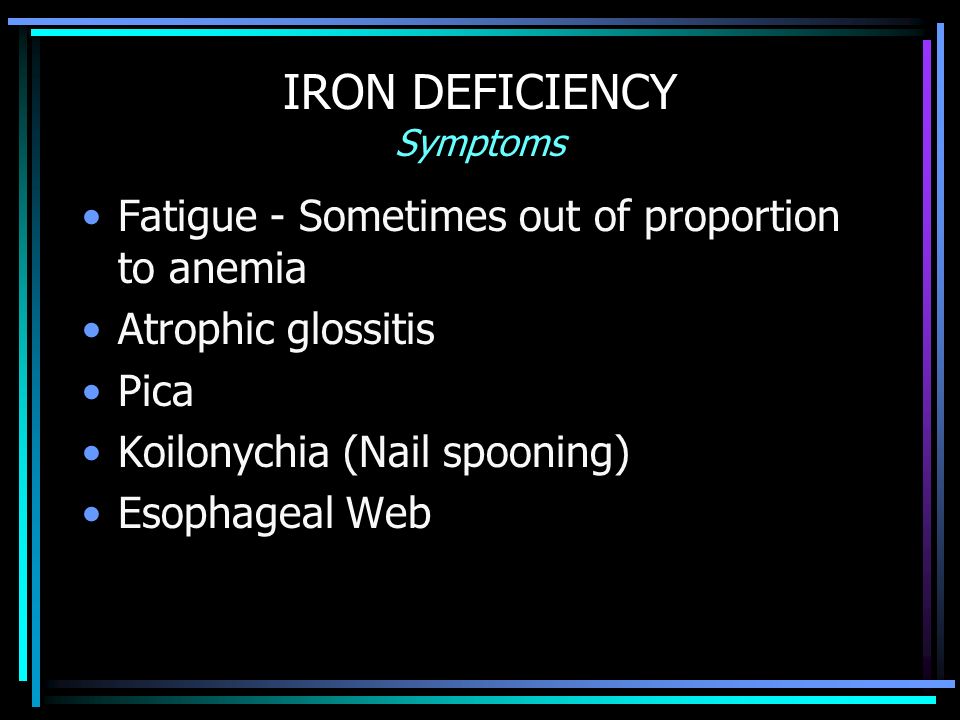Types of anemia iron deficiency. Comprehensive Guide to Types of Anemia and Iron Deficiency
What are the different types of anemia and their causes? Learn about the symptoms, diagnosis and treatments for various forms of anemia including iron deficiency, vitamin deficiency, and more.
Understanding Anemia: Types and Causes
Anemia is a prevalent medical condition characterized by a deficiency of healthy red blood cells, resulting in impaired oxygen delivery to the body’s tissues. This comprehensive guide explores the diverse types of anemia and their underlying causes, providing valuable insights for individuals seeking to address this common health concern.
Iron Deficiency Anemia: The Most Common Form
Iron deficiency anemia is the most prevalent type of anemia, caused by a shortage of iron in the body. This condition occurs when the body’s bone marrow is unable to produce sufficient hemoglobin, the iron-rich protein responsible for carrying oxygen throughout the body. Factors contributing to iron deficiency anemia include blood loss, inadequate dietary intake of iron, and certain medical conditions that impair iron absorption.
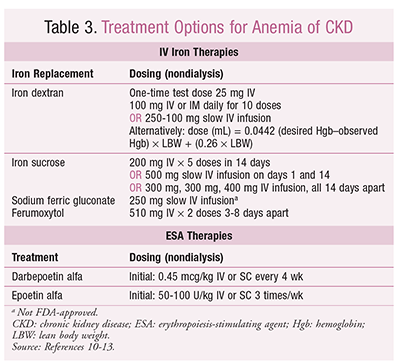
Vitamin Deficiency Anemia: Folate and B12 Deficiencies
In addition to iron, the body requires adequate levels of other essential nutrients, such as folate and vitamin B12, to produce healthy red blood cells. Vitamin deficiency anemia can arise from a diet lacking in these key vitamins, as well as from conditions that impair the body’s ability to absorb them. Pernicious anemia, a type of vitamin B12 deficiency anemia, is another common form of this condition.
Anemia of Inflammation: Chronic Diseases and Inflammation
Certain chronic diseases and inflammatory conditions can also lead to anemia by interfering with the body’s ability to produce red blood cells. This form of anemia, known as anemia of inflammation, is often associated with conditions such as cancer, HIV/AIDS, rheumatoid arthritis, kidney disease, and Crohn’s disease.
Aplastic Anemia: Rare and Life-Threatening
Aplastic anemia is a rare and potentially life-threatening form of the condition, characterized by the body’s failure to produce sufficient red blood cells. This can be caused by infections, certain medications, autoimmune disorders, or exposure to toxic chemicals. Prompt medical attention is crucial for individuals diagnosed with aplastic anemia.
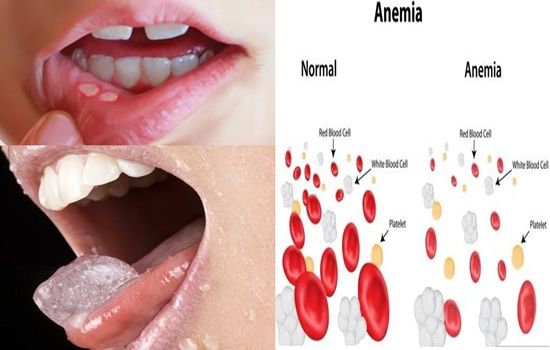
Anemias Associated with Bone Marrow Diseases
A variety of blood-related cancers and disorders, such as leukemia and myelofibrosis, can disrupt the normal production of red blood cells in the bone marrow. These anemias associated with bone marrow diseases can range in severity from mild to life-threatening, depending on the underlying condition.
Hemolytic Anemias: Faster Red Blood Cell Destruction
Hemolytic anemias are a group of conditions in which red blood cells are destroyed faster than the bone marrow can replace them. This can be due to inherited blood disorders, autoimmune diseases, or exposure to certain toxins or medications. Proper diagnosis and treatment are essential for managing hemolytic anemias.
Symptoms and Diagnosis of Anemia
The symptoms of anemia can vary widely depending on the underlying cause and severity of the condition. Common signs and symptoms include fatigue, weakness, pale or yellowish skin, irregular heartbeats, shortness of breath, dizziness, and cold extremities. If you suspect you may be experiencing anemia, it is important to consult with your healthcare provider for proper diagnosis and treatment.

Treatments for Anemia
The treatment for anemia depends on the specific type and underlying cause. In many cases, anemia can be managed through dietary changes, such as increasing the intake of iron-rich foods or supplementing with vitamins and minerals. For more severe or complex forms of anemia, medical interventions may be necessary, including blood transfusions, medications, or even bone marrow transplants in some cases.
Preventing Anemia
While some forms of anemia may be unavoidable, certain types can be prevented or managed through proactive measures. Maintaining a well-balanced diet rich in iron, folate, and vitamin B12 can help reduce the risk of developing anemia. Individuals with certain medical conditions or risk factors may also benefit from regular monitoring and early intervention to address any deficiencies or underlying causes.
In conclusion, this comprehensive guide has explored the diverse types of anemia, their causes, symptoms, and treatment options. By understanding the complexities of this common health condition, individuals can take proactive steps to address any anemia-related concerns and work closely with their healthcare providers to achieve optimal health and well-being.

Anemia – Symptoms and causes
Overview
Anemia is a condition in which you lack enough healthy red blood cells to carry adequate oxygen to your body’s tissues. Having anemia can make you feel tired and weak.
There are many forms of anemia, each with its own cause. Anemia can be temporary or long term, and it can range from mild to severe. See your doctor if you suspect that you have anemia. It can be a warning sign of serious illness.
Treatments for anemia range from taking supplements to undergoing medical procedures. You might be able to prevent some types of anemia by eating a healthy, varied diet.
Types
Symptoms
Anemia signs and symptoms vary depending on the cause. If the anemia is caused by a chronic disease, the disease can mask them, so that the anemia might be detected by tests for another condition.
Depending on the causes of your anemia, you might have no symptoms. Signs and symptoms, if they do occur, might include:
- Fatigue
- Weakness
- Pale or yellowish skin
- Irregular heartbeats
- Shortness of breath
- Dizziness or lightheadedness
- Chest pain
- Cold hands and feet
- Headaches
At first, anemia can be so mild that you don’t notice it. But symptoms worsen as anemia worsens.
When to see a doctor
Make an appointment with your doctor if you’re feeling fatigued and you don’t know why.
Fatigue has many causes besides anemia, so don’t assume that if you’re tired you must be anemic. Some people learn that their hemoglobin is low, which indicates anemia, when they donate blood. If you’re told that you can’t donate because of low hemoglobin, make an appointment with your doctor.
Causes
Anemia occurs when your blood doesn’t have enough red blood cells.
This can happen if:
- Your body doesn’t make enough red blood cells
- Bleeding causes you to lose red blood cells more quickly than they can be replaced
- Your body destroys red blood cells
What red blood cells do
Your body makes three types of blood cells — white blood cells to fight infection, platelets to help your blood clot and red blood cells to carry oxygen throughout your body.
Red blood cells contain hemoglobin — an iron-rich protein that gives blood its red color. Hemoglobin enables red blood cells to carry oxygen from your lungs to all parts of your body and to carry carbon dioxide from other parts of the body to your lungs to be exhaled.
Most blood cells, including red blood cells, are produced regularly in your bone marrow — a spongy material found within the cavities of many of your large bones. To produce hemoglobin and red blood cells, your body needs iron, vitamin B-12, folate and other nutrients from the foods you eat.
Causes of anemia
Different types of anemia have different causes. They include:
Iron deficiency anemia. This most common type of anemia is caused by a shortage of iron in your body. Your bone marrow needs iron to make hemoglobin. Without adequate iron, your body can’t produce enough hemoglobin for red blood cells.
Without iron supplementation, this type of anemia occurs in many pregnant women. It is also caused by blood loss, such as from heavy menstrual bleeding, an ulcer, cancer and regular use of some over-the-counter pain relievers, especially aspirin, which can cause inflammation of the stomach lining resulting in blood loss.
Vitamin deficiency anemia. Besides iron, your body needs folate and vitamin B-12 to produce enough healthy red blood cells. A diet lacking in these and other key nutrients can cause decreased red blood cell production.

Also, some people who consume enough B-12 aren’t able to absorb the vitamin. This can lead to vitamin deficiency anemia, also known as pernicious anemia.
- Anemia of inflammation. Certain diseases — such as cancer, HIV/AIDS, rheumatoid arthritis, kidney disease, Crohn’s disease and other acute or chronic inflammatory diseases — can interfere with the production of red blood cells.
- Aplastic anemia. This rare, life-threatening anemia occurs when your body doesn’t produce enough red blood cells. Causes of aplastic anemia include infections, certain medicines, autoimmune diseases and exposure to toxic chemicals.
- Anemias associated with bone marrow disease. A variety of diseases, such as leukemia and myelofibrosis, can cause anemia by affecting blood production in your bone marrow. The effects of these types of cancer and cancer-like disorders vary from mild to life-threatening.
- Hemolytic anemias. This group of anemias develops when red blood cells are destroyed faster than bone marrow can replace them. Certain blood diseases increase red blood cell destruction. You can inherit a hemolytic anemia, or you can develop it later in life.
- Sickle cell anemia. This inherited and sometimes serious condition is a hemolytic anemia. It’s caused by a defective form of hemoglobin that forces red blood cells to assume an abnormal crescent (sickle) shape. These irregular blood cells die prematurely, resulting in a chronic shortage of red blood cells.
Risk factors
These factors place you at increased risk of anemia:
- A diet lacking in certain vitamins and minerals. A diet consistently low in iron, vitamin B-12 and folate increases your risk of anemia.
- Intestinal disorders. Having an intestinal disorder that affects the absorption of nutrients in your small intestine — such as Crohn’s disease and celiac disease — puts you at risk of anemia.

- Menstruation. In general, women who haven’t had menopause have a greater risk of iron deficiency anemia than do men and postmenopausal women. Menstruation causes the loss of red blood cells.
- Pregnancy. If you’re pregnant and aren’t taking a multivitamin with folic acid and iron, you’re at an increased risk of anemia.
Chronic conditions. If you have cancer, kidney failure, diabetes or another chronic condition, you could be at risk of anemia of chronic disease. These conditions can lead to a shortage of red blood cells.
Slow, chronic blood loss from an ulcer or other source within your body can deplete your body’s store of iron, leading to iron deficiency anemia.
- Family history. If your family has a history of an inherited anemia, such as sickle cell anemia, you also might be at increased risk of the condition.
- Other factors. A history of certain infections, blood diseases and autoimmune disorders increases your risk of anemia. Alcoholism, exposure to toxic chemicals, and the use of some medications can affect red blood cell production and lead to anemia.
- Age. People over age 65 are at increased risk of anemia.
Complications
Left untreated, anemia can cause many health problems, such as:
- Severe fatigue. Severe anemia can make you so tired that you can’t complete everyday tasks.
- Pregnancy complications. Pregnant women with folate deficiency anemia may be more likely to have complications, such as premature birth.
- Heart problems. Anemia can lead to a rapid or irregular heartbeat (arrhythmia). When you’re anemic your heart must pump more blood to make up for the lack of oxygen in the blood. This can lead to an enlarged heart or heart failure.
- Death.
 Some inherited anemias, such as sickle cell anemia, can lead to life-threatening complications. Losing a lot of blood quickly results in acute, severe anemia and can be fatal.
Some inherited anemias, such as sickle cell anemia, can lead to life-threatening complications. Losing a lot of blood quickly results in acute, severe anemia and can be fatal.
Prevention
Many types of anemia can’t be prevented. But you can avoid iron deficiency anemia and vitamin deficiency anemias by eating a diet that includes a variety of vitamins and minerals, including:
- Iron. Iron-rich foods include beef and other meats, beans, lentils, iron-fortified cereals, dark green leafy vegetables, and dried fruit.
- Folate. This nutrient, and its synthetic form folic acid, can be found in fruits and fruit juices, dark green leafy vegetables, green peas, kidney beans, peanuts, and enriched grain products, such as bread, cereal, pasta and rice.
- Vitamin B-12. Foods rich in vitamin B-12 include meat, dairy products, and fortified cereal and soy products.
- Vitamin C. Foods rich in vitamin C include citrus fruits and juices, peppers, broccoli, tomatoes, melons and strawberries. These also help increase iron absorption.
If you’re concerned about getting enough vitamins and minerals from food, ask your doctor whether a multivitamin might help.
Aug. 16, 2019
Anemia – Diagnosis and treatment
Diagnosis
To diagnose anemia, your doctor is likely to ask you about your medical and family history, perform a physical exam, and run the following tests:
Complete blood count (CBC). A CBC is used to count the number of blood cells in a sample of your blood. For anemia, your doctor will be interested in the levels of the red blood cells contained in your blood (hematocrit) and the hemoglobin in your blood.

Normal adult hematocrit values vary among medical practices but are generally between 40% and 52% for men and 35% and 47% for women. Normal adult hemoglobin values are generally 14 to 18 grams per deciliter for men and 12 to 16 grams per deciliter for women.
- A test to determine the size and shape of your red blood cells. Some of your red blood cells might also be examined for unusual size, shape and color.
Additional diagnostic tests
If you receive a diagnosis of anemia, your doctor might order additional tests to determine the cause. Occasionally, it can be necessary to study a sample of your bone marrow to diagnose anemia.
Treatment
Anemia treatment depends on the cause.
Iron deficiency anemia. Treatment for this form of anemia usually involves taking iron supplements and changing your diet.
If the cause of iron deficiency is loss of blood — other than from menstruation — the source of the bleeding must be located and the bleeding stopped. This might involve surgery.
Vitamin deficiency anemias. Treatment for folic acid and vitamin C deficiency involves dietary supplements and increasing these nutrients in your diet.
If your digestive system has trouble absorbing vitamin B-12 from the food you eat, you might need vitamin B-12 shots. At first, you might have the shots every other day. Eventually, you’ll need shots just once a month, possibly for life, depending on your situation.
- Anemia of chronic disease. There’s no specific treatment for this type of anemia. Doctors focus on treating the underlying disease. If symptoms become severe, a blood transfusion or injections of a synthetic hormone normally produced by your kidneys (erythropoietin) might help stimulate red blood cell production and ease fatigue.

- Aplastic anemia. Treatment for this anemia can include blood transfusions to boost levels of red blood cells. You might need a bone marrow transplant if your bone marrow can’t make healthy blood cells.
- Anemias associated with bone marrow disease. Treatment of these various diseases can include medication, chemotherapy or bone marrow transplantation.
Hemolytic anemias. Managing hemolytic anemias includes avoiding suspect medications, treating infections and taking drugs that suppress your immune system, which could be attacking your red blood cells.
Depending on the cause or your hemolytic anemia, you might be referred to a heart or vascular specialist.
Sickle cell anemia. Treatment might include oxygen, pain relievers, and oral and intravenous fluids to reduce pain and prevent complications. Doctors might also recommend blood transfusions, folic acid supplements and antibiotics.
A cancer drug called hydroxyurea (Droxia, Hydrea, Siklos) also is used to treat sickle cell anemia.
- Thalassemia. Most forms of thalassemia are mild and require no treatment. More severe forms of thalassemia generally require blood transfusions, folic acid supplements, medication, removal of the spleen, or a blood and bone marrow stem cell transplant.
Clinical trials
Explore Mayo Clinic studies testing new treatments, interventions and tests as a means to prevent, detect, treat or manage this condition.
Preparing for your appointment
Make an appointment with your primary care doctor if you have prolonged fatigue or other signs or symptoms that worry you. He or she may refer you to a doctor who specializes in treating blood disorders (hematologist), the heart (cardiologist) or the digestive system (gastroenterologist).
Here’s some information to help you get ready for your appointment.
What you can do
Before your appointment, make a list of:
- Your symptoms and when they began
- Key personal information, including major stresses, implanted medical devices, exposure to toxins or chemicals, and recent life changes
- All medications, vitamins and other supplements you take, including the doses
- Questions to ask your doctor
For anemia, basic questions to ask your doctor include:
- What’s the most likely cause of my symptoms?
- Are there other possible causes?
- Do I need tests?
- Is my anemia likely temporary or long lasting?
- What treatments are available, and which do you recommend?
- What side effects can I expect from treatment?
- I have other health conditions. How can I best manage them together?
- Do I need to restrict my diet?
- Do I need to add foods to my diet? How often do I need to eat these foods?
- Do you have brochures or other printed materials I can take? What websites do you recommend?
What to expect from your doctor
Your doctor is likely to ask you questions, such as:
- Do your symptoms come and go or are they constant?
- How severe are your symptoms?
- Does anything seem to improve your symptoms?
- What, if anything, appears to worsen your symptoms?
- Are you a vegetarian?
- How many servings of fruits and vegetables do you usually eat in a day?
- Do you drink alcohol? If so, how often, and how many drinks do you usually have?
- Are you a smoker?
- Have you recently donated blood more than once?
Anemia care at Mayo Clinic
Aug. 16, 2019
Show references
- Anemia.
 National Heart, Lung, and Blood Institute. https://www.nhlbi.nih.gov/health-topics/iron-deficiency-anemia. Accessed July 23, 2019.
National Heart, Lung, and Blood Institute. https://www.nhlbi.nih.gov/health-topics/iron-deficiency-anemia. Accessed July 23, 2019. - Anemia. Lab Tests Online. https://labtestsonline.org/conditions/anemia. Accessed July 23, 2019.
- Schrier SL. Approach to the adult patient with anemia. https://www.uptodate.com/contents/search. July 23, 2019.
- Anemia. American Society of Hematology. https://www.hematology.org/Patients/Anemia/. Accessed July 23, 2019.
- Your guide to anemia. National Heart, Lung, and Blood Institute. https://www.nhlbi.nih.gov/files/docs/public/blood/anemia-yg.pdf. Accessed July 27, 2019.
- Morrow ES Jr. Allscripts EPSi. Mayo Clinic, Rochester, Minn. July 22, 2019.
Symptoms, Causes, and Treatment Explained
Think of your red blood cells as the transport system that carries oxygen to your body’s tissues. When you have anemia, your body doesn’t make enough red blood cells, or these cells don’t work as well as they should. You end up feeling weak, tired, and short of breath.
Anemia comes in many forms. Iron-deficiency anemia is most common. Other types of the disease affect only small numbers of people. Here’s a look at some of the rare types of anemia and how they’re treated.
Aplastic (or Hypoplastic) Anemia
Blood cells are made from stem cells in your bone marrow. When you have aplastic anemia, stem cells in your bone marrow are damaged and can’t make enough new blood cells.
You’re either born with aplastic anemia, meaning you inherited a gene from your parents that caused it, or you develop it (acquired). Acquired aplastic anemia is the more common of the two, and sometimes it’s only temporary.
Continued
Acquired causes include:
Inherited conditions such as Fanconi anemia, Shwachman-Diamond syndrome, and Diamond-Blackfan anemia, can damage cells and also cause aplastic anemia.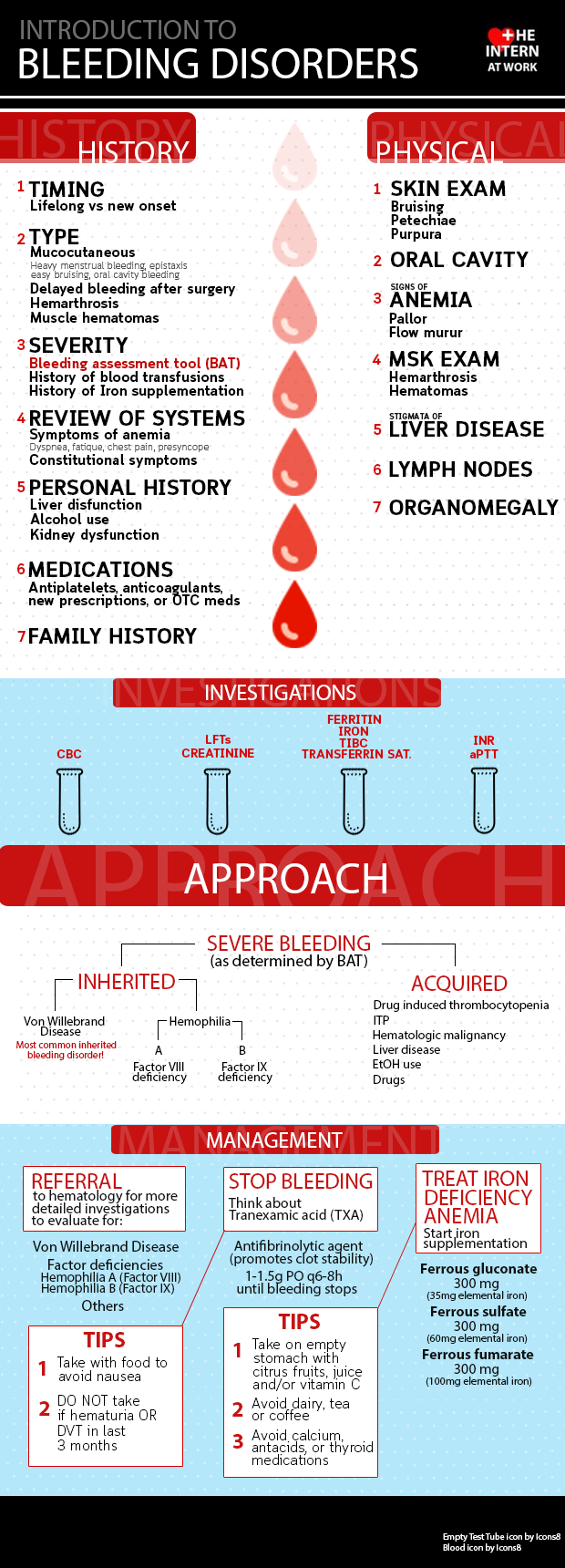
Symptoms of aplastic anemia can include everything from shortness of breath and dizziness to headaches, pale skin, chest pain, fast heart rate (tachycardia), and cold hands and feet.
- One way to treat aplastic anemia is with a blood transfusion. You’ll get a donor’s blood through a vein. A stem cell transplant can also treat aplastic anemia. It replaces the damaged stem cells in your bone marrow with healthy cells.
Sideroblastic Anemia
In this group of blood disorders, your body can’t use iron to make hemoglobin — the protein that carries oxygen in your blood. The iron buildup causes the formation of abnormal red blood cells called sideroblasts.
There are two main types of sideroblastic anemia:
Acquired sideroblastic anemia can be caused by exposure to certain chemicals or drugs.
Continued
Hereditary sideroblastic anemia happens when a gene mutation disrupts normal hemoglobin production. This gene produces “heme,” the part of hemoglobin that carries oxygen.
Symptoms for both types include:
Treatment for sideroblastic anemia depends on the cause. If you have acquired anemia, you’ll need to avoid the chemical or drug that caused it. Other treatments include vitamin B6 therapy and bone marrow or stem cell transplants.
Myelodysplastic Syndromes
Myelodysplastic syndromes (MDS) are diseases that are caused when your bone marrow is damaged and can’t make enough healthy blood cells. MDS is a type of cancer.
Continued
Some people are born with a gene that causes MDS. These genes are usually passed down from one or both parents. If you have certain inherited syndromes, including Fanconi anemia, Shwachman-Diamond syndrome, Diamond Blackfan anemia, familial platelet disorder, and severe congenital neutropenia, you could be more likely to develop MDS.
A small number of people also get MDS after radiation or chemotherapy treatment for cancer. Another risk is exposure to chemicals like benzene, which is found in tobacco smoke.
Another risk is exposure to chemicals like benzene, which is found in tobacco smoke.
Some people don’t have symptoms with MDS, but others do, including:
- Bruising or bleeding
- Infection
- Fever
- Shortness of breath
- Weakness and fatigue
- Weight loss
Oncologists (cancer doctors) and hematologists (blood doctors) treat MDS with chemotherapy, hematopoietic growth factors, and stem cell or bone marrow transplants.
Autoimmune Hemolytic Anemia
Autoimmune hemolytic anemia happens when your body’s immune system attacks and destroys red blood cells faster than it can make new ones.
If you have an autoimmune disease like lupus, you’re also more likely to get this type of anemia. Medicines such as methyldopa (Aldomet), penicillin, and quinine (Qualaquin) can also cause autoimmune hemolytic anemia.
Continued
Symptoms include fatigue, pale skin, fast heartbeat (tachycardia), trouble breathing, chills, backache, and yellow skin (jaundice).
Treating the disease that caused the anemia can also stop your red blood cell damage. If you have an autoimmune disease, your doctor might treat you with steroid drugs to calm your immune system, which can help the anemia.
Congenital Dyserythropoietic Anemia (CDA)
CDA is a group of inherited anemias that reduce the number of healthy red blood cells in the body. All CDAs are passed down through families.
There are three types of CDA, types 1, 2, and 3. Type 2 is the most common and type 3 is the rarest. Symptoms include chronic anemia, fatigue, yellow skin and eyes (jaundice), pale skin, and missing fingers and toes at birth.
Some people never need treatment. But depending on the severity of the disease, your doctor might recommend a blood transfusion, a stem cell transplant, or medicines to lower iron levels or interferon alfa-2A, a drug typically used for treating leukemia and melanoma.
Diamond-Blackfan Anemia
If you have Diamond-Blackfan anemia, your bone marrow doesn’t make enough red blood cells.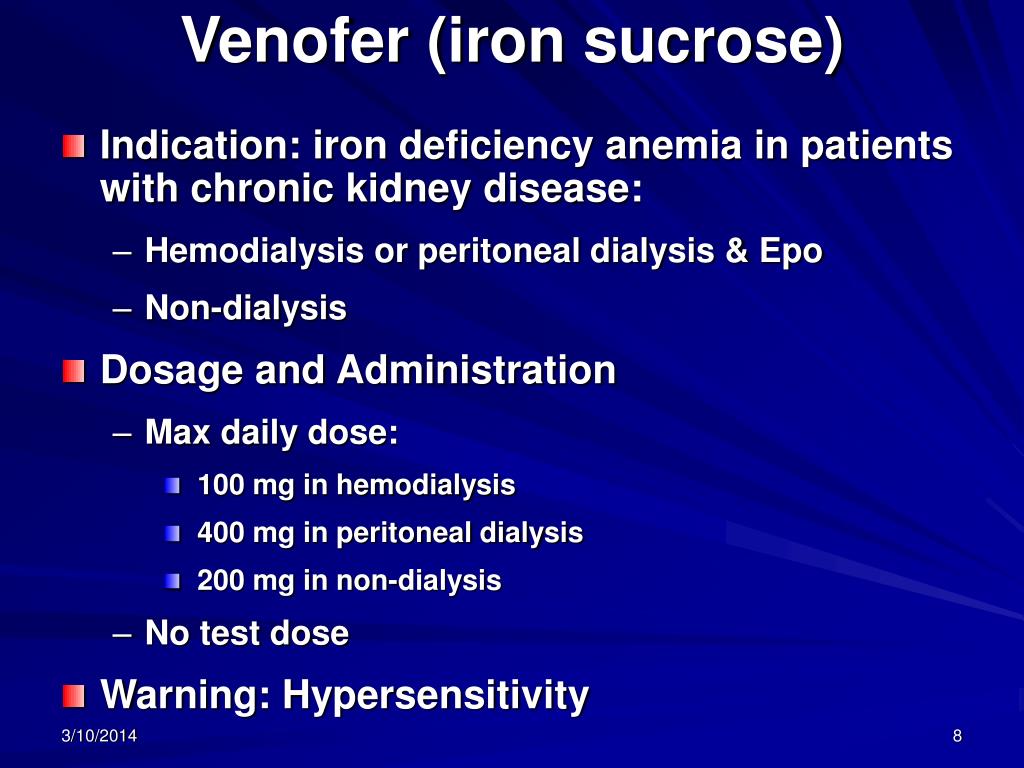 Doctors think it is caused by changes to your genes.
Doctors think it is caused by changes to your genes.
Symptoms of Diamond-Blackfan anemia include:
- Fast heartbeat (tachycardia)
- Fatigue
- Heart murmur
- Irritability
- Pale skin
- Short height
- Sleepiness
- Weak bones
Treatments include everything from steroids that can help produce more red blood cells to red blood cell transfusions and bone marrow transplants.
Megaloblastic Anemia
With this type of anemia, your bone marrow produces abnormally structured red blood cells that are too large and too young. Because they’re not mature or healthy, they can’t carry oxygen throughout your body very well.
Megaloblastic anemia is caused by too little vitamin B12 (cobalamin) or vitamin B9 (folate). Your body needs these vitamins to make red blood cells.
Some people with megaloblastic anemia might not have symptoms for many years. But once symptoms do appear, they’re similar to other types of anemia, and include:
Doctors treat megaloblastic anemia with vitamin B9 and vitamin B12 supplements to replace what your body is missing. You’ll also need treatment for any disease — such as Crohn’s — that caused your body to lack these vitamins.
Fanconi Anemia
Fanconi anemia makes your blood marrow produce too few blood cells. It’s hereditary, meaning it’s passed down from one of your parents through a gene mutation.
Symptoms and physical traits of Fanconi anemia include:
- Abnormal thumbs
- Easy bruising and bleeding
- Fatigue
- Frequent infections
- Heart, kidney, and bone problems
- Skin color changes
- Small body, head, and eyes
If you have Fanconi anemia, you’re more likely to get a type of cancer called acute myeloid leukemia, or AML. Your odds of getting cancers of the head, neck, skin, GI tract, or genitals also go up.
Treatment depends on several factors, including what stage it’s in and the severity of physical complications.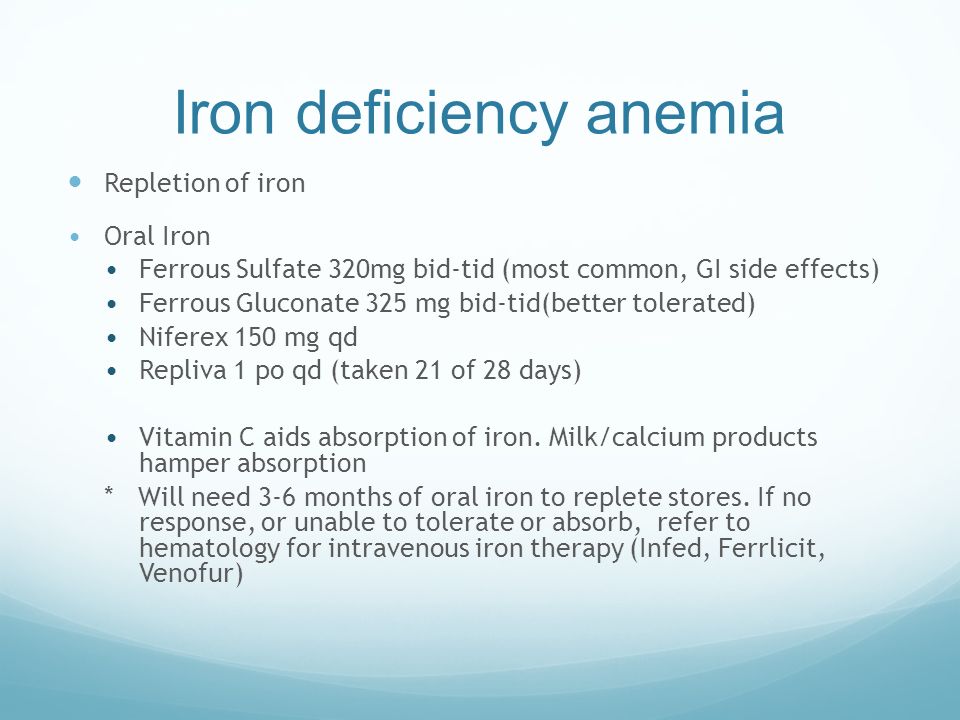 Treatments include hormone therapy and growth factors to boost blood cell growth.
Treatments include hormone therapy and growth factors to boost blood cell growth.
If symptoms become severe, your doctor might recommend a bone marrow stem cell transplant. Oftentimes a bone marrow transplant can cure the problems altogether.
Anemia: Causes, Symptoms, Diagnosis, Treatments
What Is Anemia?
Anemia is defined as a low number of red blood cells. In a routine blood test, anemia is reported as a low hemoglobin or hematocrit. Hemoglobin is the main protein in your red blood cells. It carries oxygen, and delivers it throughout your body. If you have anemia, your hemoglobin level will be low too. If it is low enough, your tissues or organs may not get enough oxygen. Symptoms of anemia — like fatigue or shortness of breath — happen because your organs aren’t getting what they need to work the way they should.
Anemia is the most common blood condition in the U.S. It affects almost 6% of the population. Women, young children, and people with long-term diseases are more likely to have anemia. Important things to remember are:
- Certain forms of anemia are passed down through your genes, and infants may have it from birth.
- Women are at risk of iron-deficiency anemia because of blood loss from their periods and higher blood supply demands during pregnancy.
- Older adults have a greater risk of anemia because they are more likely to have kidney disease or other chronic medical conditions.
There are many types of anemia. All have different causes and treatments. Some forms — like the mild anemia that happens during pregnancy — aren’t a major concern. But some types of anemia maymay reflect a serious underlying medical condition
Anemia Symptoms
The signs of anemia can be so mild that you might not even notice them. At a certain point, as your blood cells decrease, symptoms often develop. Depending on the cause of the anemia, symptoms may include:
- Dizziness, lightheadness, or feeling like you are about to pass out
- Fast or unusual heartbeat
- Headache
- Pain, including in your bones, chest, belly, and joints
- Problems with growth, for children and teens
- Shortness of breath
- Skin that’s pale or yellow
- Cold hands and feet
- Tiredness or weakness
Anemia Types and Causes
There are more than 400 types of anemia, and they’re divided into three groups:
- Anemia caused by blood loss
- Anemia caused by decreased or faulty red blood cell production
- Anemia caused by destruction of red blood cells
Continued
Anemia Caused by Blood Loss
You can lose red blood cells through bleeding.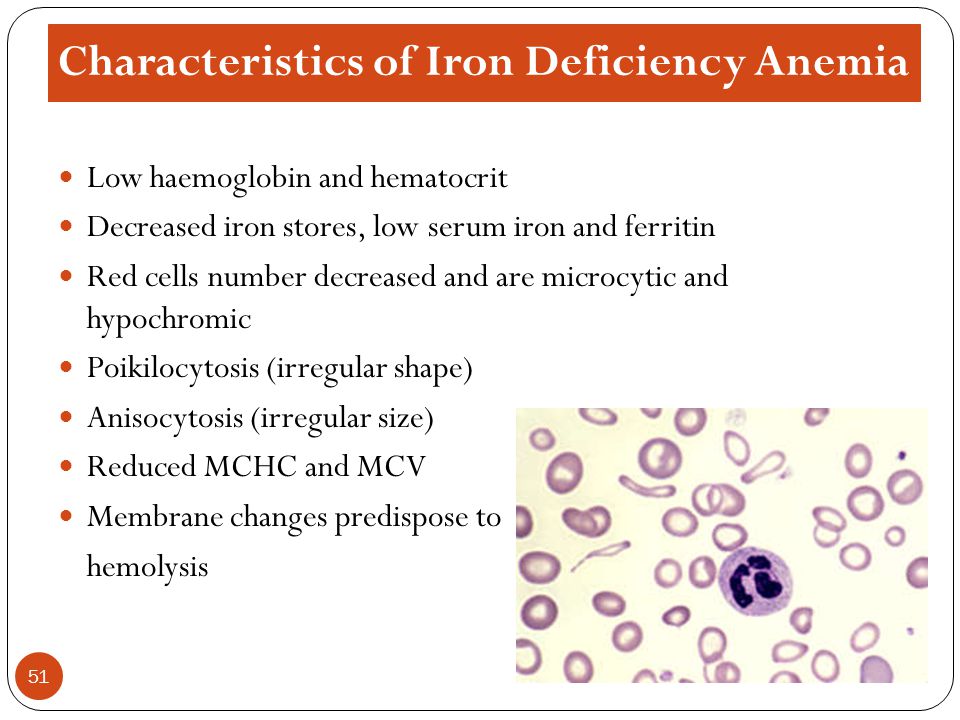 This can happen slowly over a long period of time, and you might not notice. Causes can include:
This can happen slowly over a long period of time, and you might not notice. Causes can include:
- Gastrointestinal conditions such as ulcers, hemorrhoids, gastritis (inflammation of your stomach), and cancer
- Non-steroidal anti-inflammatory drugs (NSAIDs) such as aspirin or ibuprofen, which can cause ulcers and gastritis
- A woman’s period, especially if you have a heavy menstruation (or heavy period). This can be associated with fibroids.
- Post-trauma or post-surgery as well.
Continued
Anemia Caused by Decreased or Faulty Red Blood Cell Production
With this type of anemia, your body may not create enough blood cells, or they may not work the way they should. This can happen because there’s something wrong with your red blood cells or because you don’t have enough minerals and vitamins for your red blood cells to form normally. Conditions associated with these causes of anemia include:
Bone marrow and stem cell problems may keep your body from producing enough red blood cells. Some of the stem cells in the marrow that’s in the center of your bones will develop into red blood cells. If there aren’t enough stem cells, if they don’t work right, or if they’re replaced by other cells such as cancer cells, you might get anemia. Anemia caused by bone marrow or stem cell problems includes:
- Aplastic anemia happens when you don’t have enough stem cells or have none at all. You might get aplastic anemia because of your genes or because your bone marrow was injured by medications, radiation, chemotherapy, or infection. Other malignancies that commonly effect the bone marrow include multiple myeloma or leukemia. Sometimes, there’s no clear cause of aplastic anemia.
- Lead poisoning. Lead is toxic to your bone marrow, causing you to have fewer red blood cells. Lead poisoning can happen when adults come into contact with lead at work, for example, or if children eat chips of lead paint.
 You can also get it if your food comes into contact with some types of pottery that aren’t glazed right.
You can also get it if your food comes into contact with some types of pottery that aren’t glazed right. - Thalassemia happens with a problem with hemoglobin formation (4 chains aren’t correctly formed). You make really small red blood cells-though you can make enough of them to be asymptomatic, or it can be severe.It’s passed down in your genes and usually affects people of Mediterranean, African, Middle Eastern, and Southeast Asian descent. This condition can range from mild to life-threatening; the most severe form is called Cooley’s anemia.
Continued
Iron-deficiency anemia happens because you don’t have enough of the mineral iron in your body. Your bone marrow needs iron to make hemoglobin, the part of the red blood cell that takes oxygen to your organs. Iron-deficiency anemia can be caused by:
- A diet without enough iron, especially in infants, children, teens, vegans, and vegetarians
- Certain drugs, foods, and caffeinated drinks
- Digestive conditions such as Crohn’s disease, or if you’ve had part of your stomach or small intestine removed
- Donating blood often
- Endurance training
- Pregnancy and breastfeeding using up iron in your body
- Your period
- A common cause is chronic slow bleed, usually from a Gastrointestinal source.
Sickle cell anemia is a disorder that, in the U.S., affects mainly African Americans and Hispanic Americans. Your red blood cells, which are usually round, become crescent-shaped because of a problem in your genes. Anemia results when the red blood cells break down quickly, so oxygen doesn’t get to your organs. The crescent-shaped red blood cells can also get stuck in tiny blood vessels and cause pain.
Continued
Vitamin-deficiency anemia can happen when you aren’t getting enough vitamin B12 and folate. You need these two vitamins to make red blood cells. This kind of anemia can be caused by:
- Dietary deficiency: If you eat little or no meat, you might not get enough vitamin B12.
 If you overcook vegetables or don’t eat enough of them, you might not get enough folate.
If you overcook vegetables or don’t eat enough of them, you might not get enough folate. - Megaloblastic anemia: When you don’t get enough vitamin B12, folate, or both
- Pernicious anemia: When your body doesn’t absorb enough vitamin B12
Other causes of vitamin deficiency include medications, alcohol abuse, and intestinal diseases such as tropical sprue.
Anemia associated with other chronic conditions usually happens when your body doesn’t have enough hormones to make red blood cells. Conditions that cause this type of anemia include:
Anemia Caused by Destruction of Red Blood Cells
When red blood cells are fragile and can’t handle the stress of traveling through your body, they may burst, causing what’s called hemolytic anemia. You might have this condition at birth, or it could come later. Sometimes, the causes of hemolytic anemia are unclear, but they can include:
- An attack by your immune system, as with lupus. This can happen to anyone, even a baby still in the womb or a newborn. That’s called hemolytic disease of the newborn.
- Conditions that can be passed down through your genes, such as sickle cell anemia, thalassemia, and thrombotic thrombocytopenic purpura (TTP)
- Enlarged spleen. This can, in rare cases, trap red blood cells and destroy them too early.
- Something that puts strain on your body, such as infections, drugs, snake or spider venom, or certain foods
- Toxins from advanced liver or kidney disease
- Vascular grafts, prosthetic heart valves, tumors, severe burns, being around certain chemicals, severe hypertension, and clotting disorders
Anemia Diagnosis
A complete blood count (CBC) test will measure your red blood cells, hemoglobin, and other parts of your blood. Your doctor will ask about your family history and your medical history after the CBC. They’ll probably do some tests, including:
- Blood smear or differential to count your white blood cells, check the shape of your red blood cells, and look for unusual cells
- Reticulocyte count to check for immature red blood cells
Anemia Treatment
Your treatment will depend on your type of anemia.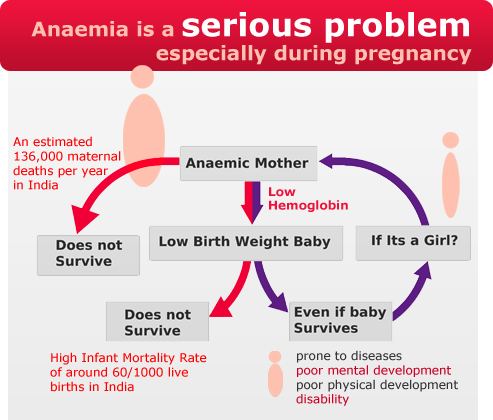 There are lot of causes, so there are also many treatments available.
There are lot of causes, so there are also many treatments available.
- If you have aplastic anemia, you might need medication, blood transfusions (in which you get blood from another person), or a bone marrow transplant (in which you get a donor’s stem cells).
- If you have hemolytic anemia, you might need medication that will hold back your immune system. Your primary care doctor may refer you to a doctor who specializes in vascular problems.
- If it’s caused by blood loss, you might have surgery to find and fix the bleeding. If you have iron-deficiency anemia, you’ll probably need to take iron supplements and change your diet.
- Sickle cell anemia treatment includes painkillers, folic acid supplements, intermittent antibiotics or oxygen therapy. A drug. called hydroxyurea (Droxia, Hydrea, Siklos) is often prescribed to decrease sickle cell pain crises (complicated mechanism). The medication called voxelator (Oxbryta) whichcan help your red blood cells keep their proper shape. Crizanlizumab-tmca (Adakveo) can keep the blood cells from sticking together and blocking vessels. L-glutamine oral powder (Endari) can cut down on your trips to the hospital for pain and also guard against a condition called acute chest syndrome.
- If you have a vitamin B12 or folate deficiency, you will be prescribed supplements..
- Thalassemia doesn’t usually need treatment, but if your case is severe, you might have blood transfusions, a bone marrow transplant, or surgery.
Symptoms, Types, Causes, Risks, Treatment & Management
Overview
What is anemia?
Anemia happens when you do not have enough red blood cells. The cells travel with iron and hemoglobin, which is a protein that helps carry oxygen through the bloodstream to your organs all through the body. When someone develops anemia, they are said to be “anemic.” Being anemic might mean that you feel more tired or cold than you usually do, or if your skin seems too pale. This is due to your organs not receiving the oxygen they need to do their jobs. Some people find out they are low in iron when they go to donate blood.
When someone develops anemia, they are said to be “anemic.” Being anemic might mean that you feel more tired or cold than you usually do, or if your skin seems too pale. This is due to your organs not receiving the oxygen they need to do their jobs. Some people find out they are low in iron when they go to donate blood.
Are there different kinds of anemia?
There are several different types of anemia, but each of them causes the number of red blood cells in circulation to drop. Red blood cell levels are low due to one of the following reasons:
- Your body cannot make enough hemoglobin (low hemoglobin).
- Your body makes hemoglobin, but the hemoglobin doesn’t work correctly.
- Your body does not make enough red blood cells.
- Your body breaks down red blood cells too quickly.
Some types of anemia that you may have heard of include iron-deficiency anemia and sickle cell anemia.
How common is anemia?
Anemia affects more than two billion people globally, which is more than 30% of the total population. It is especially common in countries with few resources, but it also affects many people in the industrialized world. Within the U.S., anemia is the most common blood condition. An estimated three million Americans have the disorder.
Who is most likely to develop anemia?
Anyone can develop anemia, although the following groups have a higher risk:
- Women: Blood loss during monthly periods and childbirth can lead to anemia. This is especially true if you have heavy periods or a condition like fibroids.
- Children, ages 1 to 2: The body needs more iron during growth spurts.
- Infants: Infants may get less iron when they are weaned from breast milk or formula to solid food. Iron from solid food is not as easily taken up by the body.
- People over 65: People over 65 are more likely to have iron-poor diets and certain chronic diseases.

- People on blood thinners: These medications include drugs include aspirin, clopidogrel (Plavix®), warfarin (Coumadin®), heparin products, apixaban (Eliquis®), betrixaban (BevyxXa®), dabigatran (Pradaxa®), edoxaban (Savaysa®) and rivaroxaban (Xarelto®).
What are the signs and symptoms of anemia?
Several signs and symptoms occur in all types of anemia, such as fatigue, shortness of breath and feeling cold. Others include:
- Dizziness or weakness.
- Headache.
- Sore tongue.
- Pale skin, dry skin, or easily bruised skin.
- Unintended movement in the lower leg (restless legs syndrome).
- Fast heartbeat.
How does anemia affect the body?
Anemia can have other affects on your body in addition to feeling tired or cold. Other signs that you might be lacking in iron include having brittle or spoon-shaped nails and possible hair loss. You might find that your sense of taste has changed, or you might experience ringing in your ears.
Different types of anemia may lead to other serious problems. People with sickle cell anemia often have heart and lung complications.
If you have anemia that is not treated, it could lead to an arrhythmia (irregular heartbeat), an enlarged heart or heart failure. You are also at greater risk of getting infections and becoming depressed.
You might have heard that iron deficiency is linked to chewing ice, which does happen. Chewing ice is a sign of pica, a condition that includes eating things that are not really food, like chalk or dirt. So pica is also a sign of iron deficiency. It is often seen in children with anemia.
How else does anemia affect children?
It is important for children to have enough iron and other nutrients in their diets to prevent anemia and the related problems with lack of attention, delayed development of motor skills and problems with learning. In older children, you need to pay more attention to signs of anemia during growth spurts and menstrual cycles.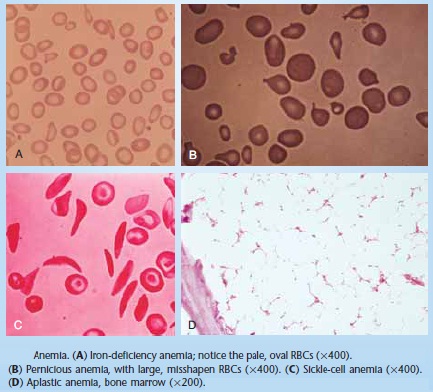
How does anemia affect older adults?
In older adults, anemia might have even more impact in causing confusion or depression. Weakness may make walking more difficult. Anemia may shorten your lifespan if you are older and it is not treated.
Can anemia affect my weight?
Having enough iron may also be a factor in weight issues. Studies have found overweight people might lose weight if they address low iron in the blood. You might experience unintentional weight loss along with anemia if you have other conditions, such as cancer. People who have had weight loss surgery might become anemic due to vitamin and mineral deficiencies.
How does anemia affect pregnancy?
Iron deficiency during pregnancy increases the chance of complications, such as premature birth. After the birth, studies have indicated that babies born to women with low iron levels have a higher risk of low birth weight and problems with their own iron levels.
If you are pregnant, you are more likely to develop iron-deficiency anemia. Your unborn baby relies on you for iron and other nutrients. Many women who are pregnant take iron pills to prevent anemia. To make sure that you have enough iron for you and your baby, eat well-balanced meals that include iron-rich foods and foods that provide B12 and B9 vitamins. Follow your healthcare provider’s instructions for taking vitamins and adding iron to your diet.
Finding out that you have anemia is just the beginning. Finding the cause of the anemia will lead you to the best treatment.
Symptoms and Causes
What causes anemia?
The most common cause of anemia is low levels of iron in the body. This type of anemia is called iron-deficiency anemia. Your body needs a certain amount of iron to make hemoglobin, the substance that moves oxygen throughout your body. However, iron-deficiency anemia is just one type. Other types are caused by:
However, iron-deficiency anemia is just one type. Other types are caused by:
- Diets lacking in vitamin B12, or you can’t use or absorb Vitamin B12 (like pernicious anemia).
- Diets lacking in folic acid, also called folate, or your body can’t use folic acid correctly (like folate-deficiency anemia).
- Inherited blood disorders (like sickle cell anemia or thalassemia).
- Conditions that cause red blood cells to break down too fast (like hemolytic anemia).
- Chronic conditions causing your body to not have enough hormones to create red blood cells. These include hyperthyroidism, hypothyroidism, advanced kidney disease, lupus and other long-term diseases.
- Blood loss related to other conditions such as ulcers, hemorrhoids or gastritis.
What causes iron-deficiency anemia?
You can get iron-deficiency anemia from:
- Bleeding, either from losing a large amount of blood quickly (for instance, in a serious accident) or losing small amounts of blood over a long period of time. The body loses more iron with blood loss than it is able to replace with food. This can happen to women having heavy menstrual periods or in people who have inflammatory bowel disease.
- Not getting enough iron in the diet.
- Needing more iron than you did previously (for instance, during pregnancy or illness).
Some types of iron-deficiency anemia are called by other names related to the cause, such as anemia of chronic disease (also called anemia of inflammation) or acute blood loss anemia.
What causes types of anemia that aren’t iron-deficiency anemia?
Pernicious anemia
In a strict sense, pernicious anemia happens when a person lacks something called intrinsic factor, which lets them absorb vitamin B12. Without vitamin B12, the body cannot develop healthy red blood cells. Other types of anemia that involve lack of B vitamins, such as B9 (folic acid), are also often lumped in as pernicious anemia. This name may refer to other conditions, including folic acid deficiency anemia and Addison’s anemia, even though there is no intrinsic factor deficiency.
This name may refer to other conditions, including folic acid deficiency anemia and Addison’s anemia, even though there is no intrinsic factor deficiency.
Hemolytic anemia
This type of anemia can be caused by inherited or acquired diseases that cause the body to make deformed red blood cells that die off too quickly. (An acquired disease is one that you didn’t have when you were born.) If it is not genetic, hemolytic anemia can be caused by harmful substances or reactions to certain drugs.
Sickle cell anemia
This genetic form of anemia happens because the shape of the red blood cells is faulty. They are sickle shaped, which means that they can clog the blood vessels and cause damage. The hemoglobin does not work correctly. This type of anemia is most often, but not always, found in African Americans.
Diamond-Blackfan anemia
This is a rare blood disorder that may be inherited or acquired. In this type of anemia, the bone marrow does not make enough red blood cells. Diamond-Blackfan anemia is diagnosed within the first year of life in nearly 90% of people who have it.
Aplastic anemia
This is a type of anemia in that is caused by damaged bone marrow which is unable to make enough red blood cells. It also may be congenital or acquired. Another name for aplastic anemia is bone marrow aplasia (failure). Some people might think of this condition as cancer, but it is not.
There is something referred to by some people as myelodysplastic anemia. However, myelodyplastic syndromes (MDS) refer to actual cancer and are a result of abnormal cells in the bone marrow.
Fanconi anemia
This type of anemia is also rare and it is genetic. It happens because the bone marrow does not make enough red blood cells. There are physical signs of this condition, such as abnormal bone structure and abnormal skin color. About 50% of people with this condition are diagnosed by the time that they turn 10 years old.
Mediterranean anemia
This condition is also known as Cooley’s anemia and actually refers to beta thalassemia major. Thalassemias are inherited conditions in which your body does not make the right amount of hemoglobin. In addition to not making enough of these cells, the red blood cells do not live as long as they would in someone without the condition.
Vegetarian or vegan anemia
This term refers to the idea that people who are vegetarians or vegans have a difficult time getting enough iron because they don’t eat meat, poultry or seafood. However, careful food planning makes this statement false. There are plenty of ways to get enough iron with a plant-based diet.
Your healthcare provider might also use terms for anemia that refer to the size of the red blood cells. These words include terms like macrocytic anemia (larger than normal cells) or microcytic anemia (smaller than normal cells).
Diagnosis and Tests
How is anemia diagnosed?
Your healthcare provider can perform blood tests to tell if you have anemia. The main test is a complete blood count test, also called the CBC. The CBC can tell you how many red blood cells you have, how big they are and what shape they are. Blood tests can also tell you if you are low in vitamins B12 and B9 and how much iron your body has stored.
The type and number of blood and other tests will depend on what type of anemia your provider thinks that you have.
- Blood and urine tests can indicate if you have hemolytic anemia.
- A colonoscopy or fecal occult blood tests of your stool may be suggested to find gastrointestinal bleeding.
- Your provider might order a bone marrow biopsy (removal of bone marrow tissue) in certain rare cases.

The type of anemia and its cause will allow your healthcare provider to determine the right kind of treatment.
Management and Treatment
How is anemia treated?
First, your healthcare provider will find out if the anemia is being caused by a poor diet or a more serious health problem. Then, you can be treated for both the anemia and its cause. Iron-deficiency anemia is treated with:
- Iron supplements taken by mouth.
- Foods high in iron and foods that help your body absorb iron (like foods with Vitamin C).
- Iron given through an intravenous (IV) infusion. (This is often a choice if you have chronic kidney disease, or CKD.)
- Transfusions of red blood cells.
If your anemia is caused by internal bleeding, your provider may need to do surgery to stop it. Surgical repair has been used to cure anemia in people with the paraesophageal type of hiatal hernias, with or without ulcers (called Cameron’s ulcers).
Other types of anemia may require other types of treatment. For instance, genetic disorders (like beta thalassemia and sickle cell anemia) may require bone marrow transplant.
If CKD is causing your anemia, in addition to iron supplementation (through oral or IV means), treatment could also include injections of erythropoietin (EPO). EPO is a hormone that tells the bone marrow to make red blood cells.
Anemia is also linked to cancer in some cases — both in terms of anemia being a symptom and in terms of cancer treatment. Both radiation and chemotherapy can cause anemia. It might be necessary to stall further cancer treatment until the anemia is improved by iron, blood transfusions, getting necessary B vitamins and/or getting shots of drugs to stimulate your body to produce EPO.
Is anemia fatal?
Although most types of anemia can be treated, anemia can still be fatal. According to the Centers for Disease Control and Prevention, there were 1.7 deaths per 100,000 due to anemia in the U.S. in 2017.
Prevention
How can I prevent anemia?
Some kinds of anemia, such as those that are inherited, cannot be prevented. However, you can prevent anemia caused by iron deficiency, vitamin B12 deficiency and vitamin B9 deficiency by eating well. This includes eating a diet with enough foods that provide iron and these vitamins, along with vitamin C food sources to help with the absorption. Make sure that you drink enough water. Some studies have indicated that this will help keep hemoglobin levels up.
How do I manage anemia?
While some types of anemia are short-term and mild, others can last throughout a lifetime. There are several ways to help manage anemia, including:
- Following a healthy diet.
- Drinking enough water to stay hydrated.
- Exercising regularly. However, if you have been weak, you should begin exercising cautiously. Check with your healthcare provider about ways to exercise safely.
- Avoiding exposure to chemicals that set off anemia.
- Washing your hands often to avoid infection.
- Taking good care of your teeth and going to the dentist regularly.
- Talking to your doctor about any changing symptoms.
- Keeping track of your symptoms by writing them down.
Which foods should I eat, and which foods should I avoid, if I have anemia?
With anemia, making good food choices is important. Eating junk food means you are getting calories without nutrients. You also have to consider other medical conditions that you have when you make your food choices.
Some things have been shown to impair iron absorption. You should not take calcium and iron supplements at the same time. In addition, you may want to avoid or limit these items:
- Tannin-containing items like coffee, tea and some spices.
- Milk.
- Egg whites.
- Fiber. (You will not want to eliminate all fiber, though, because taking iron supplements could cause constipation.)
- Soy protein.
In general, you should eat iron-rich foods and foods that provide vitamins B12, B9 and C. This means that you can enjoy plenty of good food that is for you, whether you eat meat or not. You can get iron from plant sources like lentils, spinach and pistachios. You can get iron from protein sources like lean beef and turkey. Whole grains and dark leafy vegetables are good sources of B vitamins. Some foods are even fortified with iron.
Citrus fruits, berries and other vitamin C-containing foods like peppers and tomatoes improve iron consumption. It is a good idea to get advice from your healthcare provider or perhaps from a registered dietitian about the best ways to eat when you have anemia. Also, make sure that grapefruit does not interfere with any of your medications.
It’s important to be educated on what you can do to take the best care of yourself that you can. It is also important that you and your healthcare provider make decisions together about what works best for you. Take the opportunity to ask for a referral to a registered dietitian if you want help setting a diet to help with iron intake. Make sure you ask all the questions that you have so you can be confident in moving forward.
Resources
Are there resources for people with anemia?
Depending on what kind of anemia you have or are interested in learning more about, you might find the following resources to be helpful.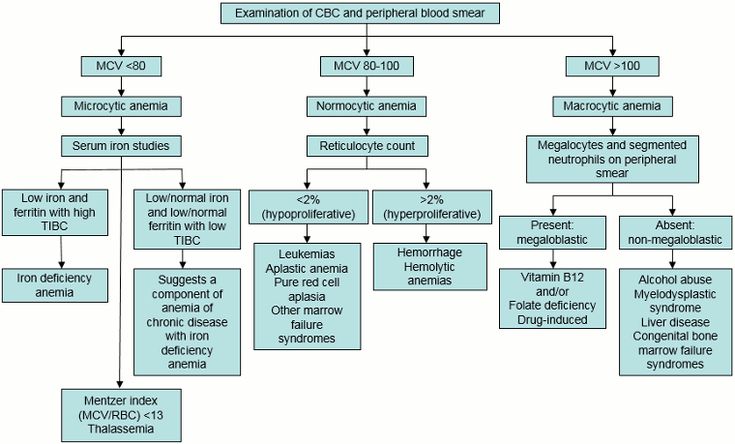
Symptoms, Types, Causes, Risks, Treatment & Management
Overview
What is anemia?
Anemia happens when you do not have enough red blood cells. The cells travel with iron and hemoglobin, which is a protein that helps carry oxygen through the bloodstream to your organs all through the body. When someone develops anemia, they are said to be “anemic.” Being anemic might mean that you feel more tired or cold than you usually do, or if your skin seems too pale. This is due to your organs not receiving the oxygen they need to do their jobs. Some people find out they are low in iron when they go to donate blood.
Are there different kinds of anemia?
There are several different types of anemia, but each of them causes the number of red blood cells in circulation to drop. Red blood cell levels are low due to one of the following reasons:
- Your body cannot make enough hemoglobin (low hemoglobin).
- Your body makes hemoglobin, but the hemoglobin doesn’t work correctly.
- Your body does not make enough red blood cells.
- Your body breaks down red blood cells too quickly.
Some types of anemia that you may have heard of include iron-deficiency anemia and sickle cell anemia.
How common is anemia?
Anemia affects more than two billion people globally, which is more than 30% of the total population. It is especially common in countries with few resources, but it also affects many people in the industrialized world. Within the U.S., anemia is the most common blood condition. An estimated three million Americans have the disorder.
Who is most likely to develop anemia?
Anyone can develop anemia, although the following groups have a higher risk:
- Women: Blood loss during monthly periods and childbirth can lead to anemia.
 This is especially true if you have heavy periods or a condition like fibroids.
This is especially true if you have heavy periods or a condition like fibroids. - Children, ages 1 to 2: The body needs more iron during growth spurts.
- Infants: Infants may get less iron when they are weaned from breast milk or formula to solid food. Iron from solid food is not as easily taken up by the body.
- People over 65: People over 65 are more likely to have iron-poor diets and certain chronic diseases.
- People on blood thinners: These medications include drugs include aspirin, clopidogrel (Plavix®), warfarin (Coumadin®), heparin products, apixaban (Eliquis®), betrixaban (BevyxXa®), dabigatran (Pradaxa®), edoxaban (Savaysa®) and rivaroxaban (Xarelto®).
What are the signs and symptoms of anemia?
Several signs and symptoms occur in all types of anemia, such as fatigue, shortness of breath and feeling cold. Others include:
- Dizziness or weakness.
- Headache.
- Sore tongue.
- Pale skin, dry skin, or easily bruised skin.
- Unintended movement in the lower leg (restless legs syndrome).
- Fast heartbeat.
How does anemia affect the body?
Anemia can have other affects on your body in addition to feeling tired or cold. Other signs that you might be lacking in iron include having brittle or spoon-shaped nails and possible hair loss. You might find that your sense of taste has changed, or you might experience ringing in your ears.
Different types of anemia may lead to other serious problems. People with sickle cell anemia often have heart and lung complications.
If you have anemia that is not treated, it could lead to an arrhythmia (irregular heartbeat), an enlarged heart or heart failure. You are also at greater risk of getting infections and becoming depressed.
You might have heard that iron deficiency is linked to chewing ice, which does happen. Chewing ice is a sign of pica, a condition that includes eating things that are not really food, like chalk or dirt. So pica is also a sign of iron deficiency. It is often seen in children with anemia.
So pica is also a sign of iron deficiency. It is often seen in children with anemia.
How else does anemia affect children?
It is important for children to have enough iron and other nutrients in their diets to prevent anemia and the related problems with lack of attention, delayed development of motor skills and problems with learning. In older children, you need to pay more attention to signs of anemia during growth spurts and menstrual cycles.
How does anemia affect older adults?
In older adults, anemia might have even more impact in causing confusion or depression. Weakness may make walking more difficult. Anemia may shorten your lifespan if you are older and it is not treated.
Can anemia affect my weight?
Having enough iron may also be a factor in weight issues. Studies have found overweight people might lose weight if they address low iron in the blood. You might experience unintentional weight loss along with anemia if you have other conditions, such as cancer. People who have had weight loss surgery might become anemic due to vitamin and mineral deficiencies.
How does anemia affect pregnancy?
Iron deficiency during pregnancy increases the chance of complications, such as premature birth. After the birth, studies have indicated that babies born to women with low iron levels have a higher risk of low birth weight and problems with their own iron levels.
If you are pregnant, you are more likely to develop iron-deficiency anemia. Your unborn baby relies on you for iron and other nutrients. Many women who are pregnant take iron pills to prevent anemia. To make sure that you have enough iron for you and your baby, eat well-balanced meals that include iron-rich foods and foods that provide B12 and B9 vitamins. Follow your healthcare provider’s instructions for taking vitamins and adding iron to your diet.
Finding out that you have anemia is just the beginning. Finding the cause of the anemia will lead you to the best treatment.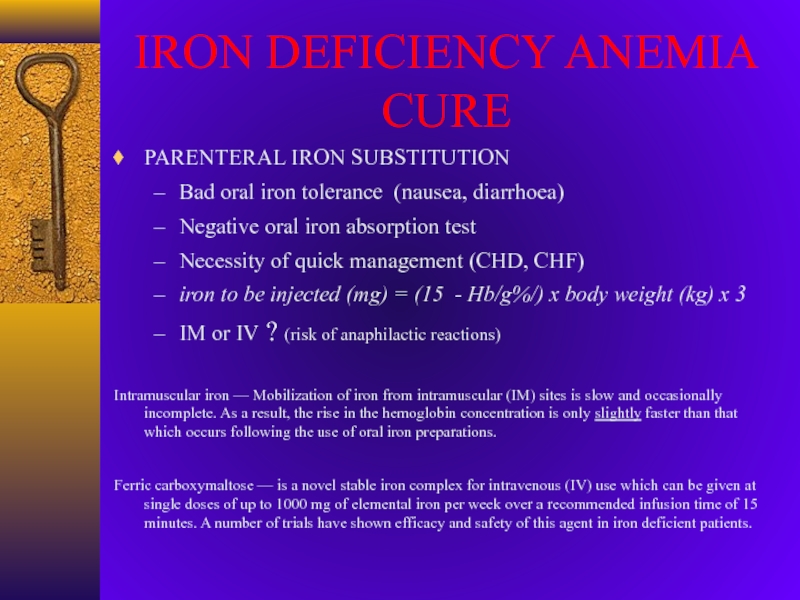
Symptoms and Causes
What causes anemia?
The most common cause of anemia is low levels of iron in the body. This type of anemia is called iron-deficiency anemia. Your body needs a certain amount of iron to make hemoglobin, the substance that moves oxygen throughout your body. However, iron-deficiency anemia is just one type. Other types are caused by:
- Diets lacking in vitamin B12, or you can’t use or absorb Vitamin B12 (like pernicious anemia).
- Diets lacking in folic acid, also called folate, or your body can’t use folic acid correctly (like folate-deficiency anemia).
- Inherited blood disorders (like sickle cell anemia or thalassemia).
- Conditions that cause red blood cells to break down too fast (like hemolytic anemia).
- Chronic conditions causing your body to not have enough hormones to create red blood cells. These include hyperthyroidism, hypothyroidism, advanced kidney disease, lupus and other long-term diseases.
- Blood loss related to other conditions such as ulcers, hemorrhoids or gastritis.
What causes iron-deficiency anemia?
You can get iron-deficiency anemia from:
- Bleeding, either from losing a large amount of blood quickly (for instance, in a serious accident) or losing small amounts of blood over a long period of time. The body loses more iron with blood loss than it is able to replace with food. This can happen to women having heavy menstrual periods or in people who have inflammatory bowel disease.
- Not getting enough iron in the diet.
- Needing more iron than you did previously (for instance, during pregnancy or illness).
Some types of iron-deficiency anemia are called by other names related to the cause, such as anemia of chronic disease (also called anemia of inflammation) or acute blood loss anemia.
What causes types of anemia that aren’t iron-deficiency anemia?
Pernicious anemia
In a strict sense, pernicious anemia happens when a person lacks something called intrinsic factor, which lets them absorb vitamin B12. Without vitamin B12, the body cannot develop healthy red blood cells. Other types of anemia that involve lack of B vitamins, such as B9 (folic acid), are also often lumped in as pernicious anemia. This name may refer to other conditions, including folic acid deficiency anemia and Addison’s anemia, even though there is no intrinsic factor deficiency.
Hemolytic anemia
This type of anemia can be caused by inherited or acquired diseases that cause the body to make deformed red blood cells that die off too quickly. (An acquired disease is one that you didn’t have when you were born.) If it is not genetic, hemolytic anemia can be caused by harmful substances or reactions to certain drugs.
Sickle cell anemia
This genetic form of anemia happens because the shape of the red blood cells is faulty. They are sickle shaped, which means that they can clog the blood vessels and cause damage. The hemoglobin does not work correctly. This type of anemia is most often, but not always, found in African Americans.
Diamond-Blackfan anemia
This is a rare blood disorder that may be inherited or acquired. In this type of anemia, the bone marrow does not make enough red blood cells. Diamond-Blackfan anemia is diagnosed within the first year of life in nearly 90% of people who have it.
Aplastic anemia
This is a type of anemia in that is caused by damaged bone marrow which is unable to make enough red blood cells. It also may be congenital or acquired. Another name for aplastic anemia is bone marrow aplasia (failure). Some people might think of this condition as cancer, but it is not.
There is something referred to by some people as myelodysplastic anemia. However, myelodyplastic syndromes (MDS) refer to actual cancer and are a result of abnormal cells in the bone marrow.
However, myelodyplastic syndromes (MDS) refer to actual cancer and are a result of abnormal cells in the bone marrow.
Fanconi anemia
This type of anemia is also rare and it is genetic. It happens because the bone marrow does not make enough red blood cells. There are physical signs of this condition, such as abnormal bone structure and abnormal skin color. About 50% of people with this condition are diagnosed by the time that they turn 10 years old.
Mediterranean anemia
This condition is also known as Cooley’s anemia and actually refers to beta thalassemia major. Thalassemias are inherited conditions in which your body does not make the right amount of hemoglobin. In addition to not making enough of these cells, the red blood cells do not live as long as they would in someone without the condition.
Vegetarian or vegan anemia
This term refers to the idea that people who are vegetarians or vegans have a difficult time getting enough iron because they don’t eat meat, poultry or seafood. However, careful food planning makes this statement false. There are plenty of ways to get enough iron with a plant-based diet.
Your healthcare provider might also use terms for anemia that refer to the size of the red blood cells. These words include terms like macrocytic anemia (larger than normal cells) or microcytic anemia (smaller than normal cells).
Diagnosis and Tests
How is anemia diagnosed?
Your healthcare provider can perform blood tests to tell if you have anemia. The main test is a complete blood count test, also called the CBC. The CBC can tell you how many red blood cells you have, how big they are and what shape they are. Blood tests can also tell you if you are low in vitamins B12 and B9 and how much iron your body has stored.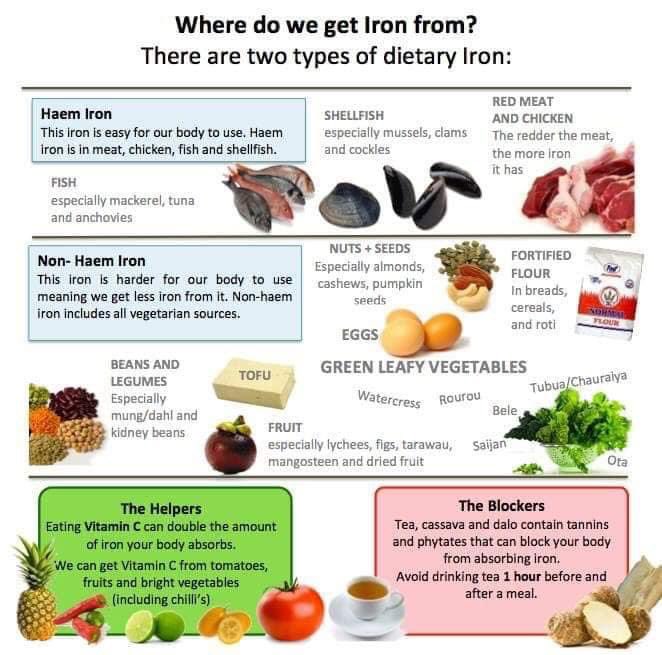
The type and number of blood and other tests will depend on what type of anemia your provider thinks that you have.
- Blood and urine tests can indicate if you have hemolytic anemia.
- A colonoscopy or fecal occult blood tests of your stool may be suggested to find gastrointestinal bleeding.
- Your provider might order a bone marrow biopsy (removal of bone marrow tissue) in certain rare cases.
The type of anemia and its cause will allow your healthcare provider to determine the right kind of treatment.
Management and Treatment
How is anemia treated?
First, your healthcare provider will find out if the anemia is being caused by a poor diet or a more serious health problem. Then, you can be treated for both the anemia and its cause. Iron-deficiency anemia is treated with:
- Iron supplements taken by mouth.
- Foods high in iron and foods that help your body absorb iron (like foods with Vitamin C).
- Iron given through an intravenous (IV) infusion. (This is often a choice if you have chronic kidney disease, or CKD.)
- Transfusions of red blood cells.
If your anemia is caused by internal bleeding, your provider may need to do surgery to stop it. Surgical repair has been used to cure anemia in people with the paraesophageal type of hiatal hernias, with or without ulcers (called Cameron’s ulcers).
Other types of anemia may require other types of treatment. For instance, genetic disorders (like beta thalassemia and sickle cell anemia) may require bone marrow transplant.
If CKD is causing your anemia, in addition to iron supplementation (through oral or IV means), treatment could also include injections of erythropoietin (EPO). EPO is a hormone that tells the bone marrow to make red blood cells.
Anemia is also linked to cancer in some cases — both in terms of anemia being a symptom and in terms of cancer treatment. Both radiation and chemotherapy can cause anemia. It might be necessary to stall further cancer treatment until the anemia is improved by iron, blood transfusions, getting necessary B vitamins and/or getting shots of drugs to stimulate your body to produce EPO.
Is anemia fatal?
Although most types of anemia can be treated, anemia can still be fatal. According to the Centers for Disease Control and Prevention, there were 1.7 deaths per 100,000 due to anemia in the U.S. in 2017.
Prevention
How can I prevent anemia?
Some kinds of anemia, such as those that are inherited, cannot be prevented. However, you can prevent anemia caused by iron deficiency, vitamin B12 deficiency and vitamin B9 deficiency by eating well. This includes eating a diet with enough foods that provide iron and these vitamins, along with vitamin C food sources to help with the absorption. Make sure that you drink enough water. Some studies have indicated that this will help keep hemoglobin levels up.
How do I manage anemia?
While some types of anemia are short-term and mild, others can last throughout a lifetime. There are several ways to help manage anemia, including:
- Following a healthy diet.
- Drinking enough water to stay hydrated.
- Exercising regularly. However, if you have been weak, you should begin exercising cautiously. Check with your healthcare provider about ways to exercise safely.
- Avoiding exposure to chemicals that set off anemia.
- Washing your hands often to avoid infection.
- Taking good care of your teeth and going to the dentist regularly.

- Talking to your doctor about any changing symptoms.
- Keeping track of your symptoms by writing them down.
Which foods should I eat, and which foods should I avoid, if I have anemia?
With anemia, making good food choices is important. Eating junk food means you are getting calories without nutrients. You also have to consider other medical conditions that you have when you make your food choices.
Some things have been shown to impair iron absorption. You should not take calcium and iron supplements at the same time. In addition, you may want to avoid or limit these items:
- Tannin-containing items like coffee, tea and some spices.
- Milk.
- Egg whites.
- Fiber. (You will not want to eliminate all fiber, though, because taking iron supplements could cause constipation.)
- Soy protein.
In general, you should eat iron-rich foods and foods that provide vitamins B12, B9 and C. This means that you can enjoy plenty of good food that is for you, whether you eat meat or not. You can get iron from plant sources like lentils, spinach and pistachios. You can get iron from protein sources like lean beef and turkey. Whole grains and dark leafy vegetables are good sources of B vitamins. Some foods are even fortified with iron.
Citrus fruits, berries and other vitamin C-containing foods like peppers and tomatoes improve iron consumption. It is a good idea to get advice from your healthcare provider or perhaps from a registered dietitian about the best ways to eat when you have anemia. Also, make sure that grapefruit does not interfere with any of your medications.
It’s important to be educated on what you can do to take the best care of yourself that you can. It is also important that you and your healthcare provider make decisions together about what works best for you. Take the opportunity to ask for a referral to a registered dietitian if you want help setting a diet to help with iron intake.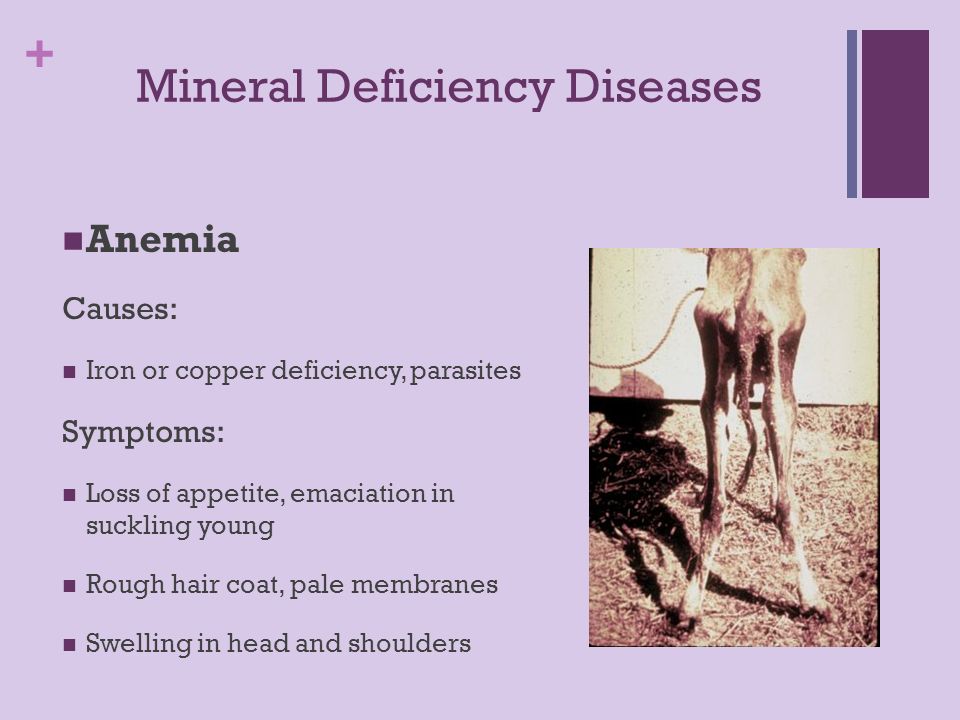 Make sure you ask all the questions that you have so you can be confident in moving forward.
Make sure you ask all the questions that you have so you can be confident in moving forward.
Resources
Are there resources for people with anemia?
Depending on what kind of anemia you have or are interested in learning more about, you might find the following resources to be helpful.
Symptoms, Types, Causes, Risks, Treatment & Management
Overview
What is anemia?
Anemia happens when you do not have enough red blood cells. The cells travel with iron and hemoglobin, which is a protein that helps carry oxygen through the bloodstream to your organs all through the body. When someone develops anemia, they are said to be “anemic.” Being anemic might mean that you feel more tired or cold than you usually do, or if your skin seems too pale. This is due to your organs not receiving the oxygen they need to do their jobs. Some people find out they are low in iron when they go to donate blood.
Are there different kinds of anemia?
There are several different types of anemia, but each of them causes the number of red blood cells in circulation to drop. Red blood cell levels are low due to one of the following reasons:
- Your body cannot make enough hemoglobin (low hemoglobin).
- Your body makes hemoglobin, but the hemoglobin doesn’t work correctly.
- Your body does not make enough red blood cells.
- Your body breaks down red blood cells too quickly.
Some types of anemia that you may have heard of include iron-deficiency anemia and sickle cell anemia.
How common is anemia?
Anemia affects more than two billion people globally, which is more than 30% of the total population. It is especially common in countries with few resources, but it also affects many people in the industrialized world. Within the U.S., anemia is the most common blood condition. An estimated three million Americans have the disorder.
Who is most likely to develop anemia?
Anyone can develop anemia, although the following groups have a higher risk:
- Women: Blood loss during monthly periods and childbirth can lead to anemia. This is especially true if you have heavy periods or a condition like fibroids.
- Children, ages 1 to 2: The body needs more iron during growth spurts.
- Infants: Infants may get less iron when they are weaned from breast milk or formula to solid food. Iron from solid food is not as easily taken up by the body.
- People over 65: People over 65 are more likely to have iron-poor diets and certain chronic diseases.
- People on blood thinners: These medications include drugs include aspirin, clopidogrel (Plavix®), warfarin (Coumadin®), heparin products, apixaban (Eliquis®), betrixaban (BevyxXa®), dabigatran (Pradaxa®), edoxaban (Savaysa®) and rivaroxaban (Xarelto®).
What are the signs and symptoms of anemia?
Several signs and symptoms occur in all types of anemia, such as fatigue, shortness of breath and feeling cold. Others include:
- Dizziness or weakness.
- Headache.
- Sore tongue.
- Pale skin, dry skin, or easily bruised skin.
- Unintended movement in the lower leg (restless legs syndrome).
- Fast heartbeat.
How does anemia affect the body?
Anemia can have other affects on your body in addition to feeling tired or cold. Other signs that you might be lacking in iron include having brittle or spoon-shaped nails and possible hair loss.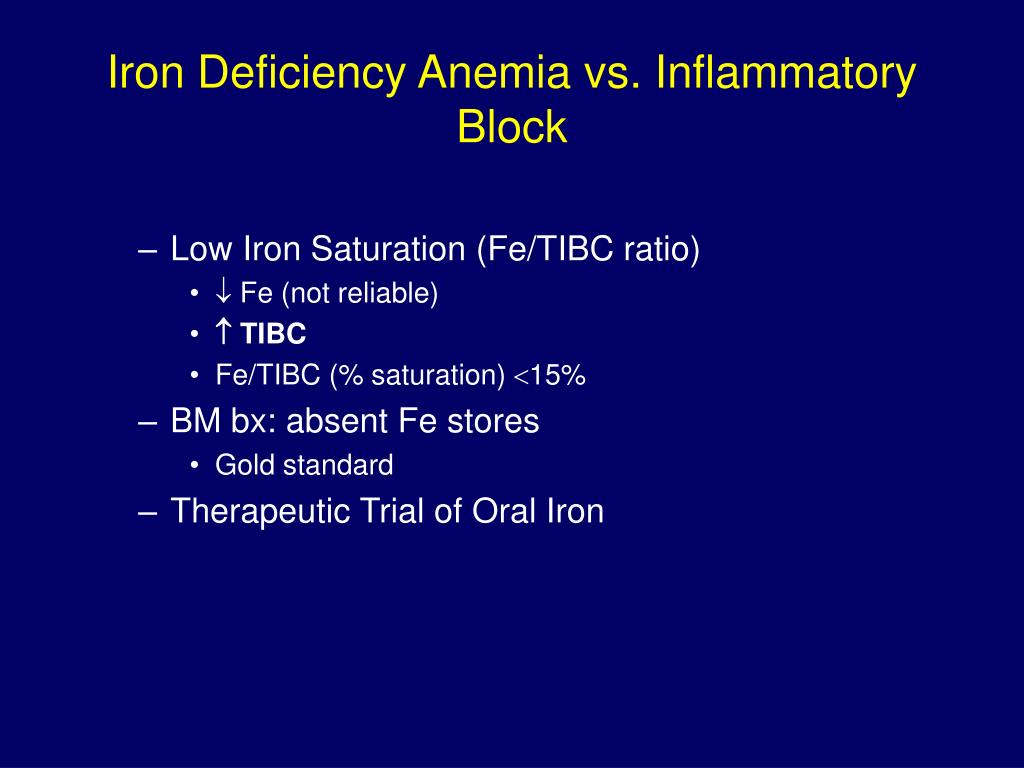 You might find that your sense of taste has changed, or you might experience ringing in your ears.
You might find that your sense of taste has changed, or you might experience ringing in your ears.
Different types of anemia may lead to other serious problems. People with sickle cell anemia often have heart and lung complications.
If you have anemia that is not treated, it could lead to an arrhythmia (irregular heartbeat), an enlarged heart or heart failure. You are also at greater risk of getting infections and becoming depressed.
You might have heard that iron deficiency is linked to chewing ice, which does happen. Chewing ice is a sign of pica, a condition that includes eating things that are not really food, like chalk or dirt. So pica is also a sign of iron deficiency. It is often seen in children with anemia.
How else does anemia affect children?
It is important for children to have enough iron and other nutrients in their diets to prevent anemia and the related problems with lack of attention, delayed development of motor skills and problems with learning. In older children, you need to pay more attention to signs of anemia during growth spurts and menstrual cycles.
How does anemia affect older adults?
In older adults, anemia might have even more impact in causing confusion or depression. Weakness may make walking more difficult. Anemia may shorten your lifespan if you are older and it is not treated.
Can anemia affect my weight?
Having enough iron may also be a factor in weight issues. Studies have found overweight people might lose weight if they address low iron in the blood. You might experience unintentional weight loss along with anemia if you have other conditions, such as cancer. People who have had weight loss surgery might become anemic due to vitamin and mineral deficiencies.
How does anemia affect pregnancy?
Iron deficiency during pregnancy increases the chance of complications, such as premature birth. After the birth, studies have indicated that babies born to women with low iron levels have a higher risk of low birth weight and problems with their own iron levels.
If you are pregnant, you are more likely to develop iron-deficiency anemia. Your unborn baby relies on you for iron and other nutrients. Many women who are pregnant take iron pills to prevent anemia. To make sure that you have enough iron for you and your baby, eat well-balanced meals that include iron-rich foods and foods that provide B12 and B9 vitamins. Follow your healthcare provider’s instructions for taking vitamins and adding iron to your diet.
Finding out that you have anemia is just the beginning. Finding the cause of the anemia will lead you to the best treatment.
Symptoms and Causes
What causes anemia?
The most common cause of anemia is low levels of iron in the body. This type of anemia is called iron-deficiency anemia. Your body needs a certain amount of iron to make hemoglobin, the substance that moves oxygen throughout your body. However, iron-deficiency anemia is just one type. Other types are caused by:
- Diets lacking in vitamin B12, or you can’t use or absorb Vitamin B12 (like pernicious anemia).
- Diets lacking in folic acid, also called folate, or your body can’t use folic acid correctly (like folate-deficiency anemia).
- Inherited blood disorders (like sickle cell anemia or thalassemia).
- Conditions that cause red blood cells to break down too fast (like hemolytic anemia).
- Chronic conditions causing your body to not have enough hormones to create red blood cells. These include hyperthyroidism, hypothyroidism, advanced kidney disease, lupus and other long-term diseases.
- Blood loss related to other conditions such as ulcers, hemorrhoids or gastritis.
What causes iron-deficiency anemia?
You can get iron-deficiency anemia from:
- Bleeding, either from losing a large amount of blood quickly (for instance, in a serious accident) or losing small amounts of blood over a long period of time.
 The body loses more iron with blood loss than it is able to replace with food. This can happen to women having heavy menstrual periods or in people who have inflammatory bowel disease.
The body loses more iron with blood loss than it is able to replace with food. This can happen to women having heavy menstrual periods or in people who have inflammatory bowel disease. - Not getting enough iron in the diet.
- Needing more iron than you did previously (for instance, during pregnancy or illness).
Some types of iron-deficiency anemia are called by other names related to the cause, such as anemia of chronic disease (also called anemia of inflammation) or acute blood loss anemia.
What causes types of anemia that aren’t iron-deficiency anemia?
Pernicious anemia
In a strict sense, pernicious anemia happens when a person lacks something called intrinsic factor, which lets them absorb vitamin B12. Without vitamin B12, the body cannot develop healthy red blood cells. Other types of anemia that involve lack of B vitamins, such as B9 (folic acid), are also often lumped in as pernicious anemia. This name may refer to other conditions, including folic acid deficiency anemia and Addison’s anemia, even though there is no intrinsic factor deficiency.
Hemolytic anemia
This type of anemia can be caused by inherited or acquired diseases that cause the body to make deformed red blood cells that die off too quickly. (An acquired disease is one that you didn’t have when you were born.) If it is not genetic, hemolytic anemia can be caused by harmful substances or reactions to certain drugs.
Sickle cell anemia
This genetic form of anemia happens because the shape of the red blood cells is faulty. They are sickle shaped, which means that they can clog the blood vessels and cause damage. The hemoglobin does not work correctly. This type of anemia is most often, but not always, found in African Americans.
Diamond-Blackfan anemia
This is a rare blood disorder that may be inherited or acquired.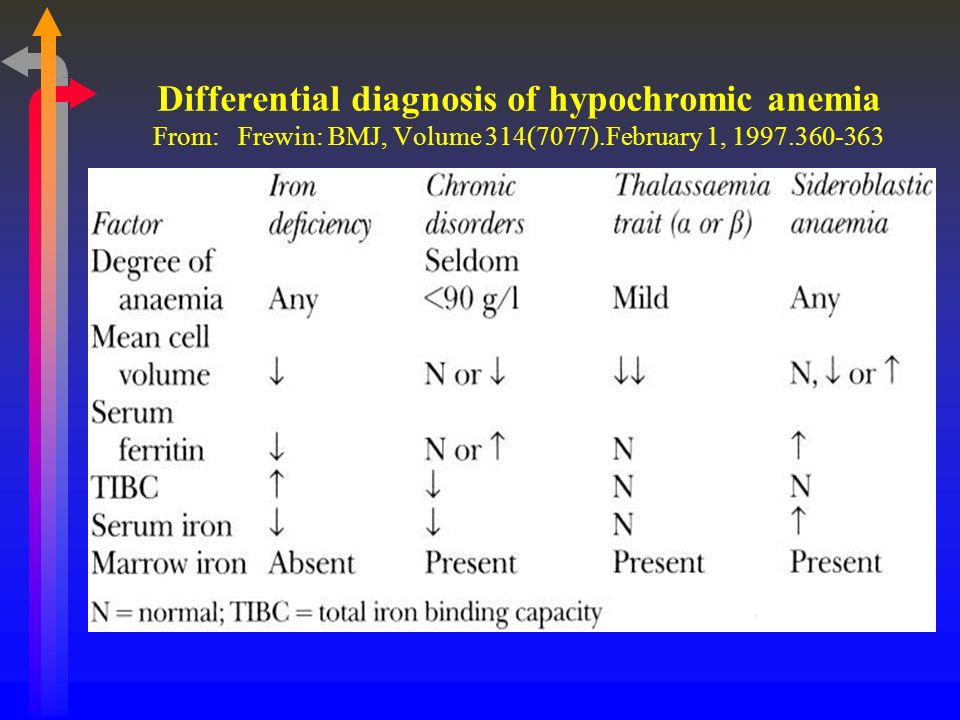 In this type of anemia, the bone marrow does not make enough red blood cells. Diamond-Blackfan anemia is diagnosed within the first year of life in nearly 90% of people who have it.
In this type of anemia, the bone marrow does not make enough red blood cells. Diamond-Blackfan anemia is diagnosed within the first year of life in nearly 90% of people who have it.
Aplastic anemia
This is a type of anemia in that is caused by damaged bone marrow which is unable to make enough red blood cells. It also may be congenital or acquired. Another name for aplastic anemia is bone marrow aplasia (failure). Some people might think of this condition as cancer, but it is not.
There is something referred to by some people as myelodysplastic anemia. However, myelodyplastic syndromes (MDS) refer to actual cancer and are a result of abnormal cells in the bone marrow.
Fanconi anemia
This type of anemia is also rare and it is genetic. It happens because the bone marrow does not make enough red blood cells. There are physical signs of this condition, such as abnormal bone structure and abnormal skin color. About 50% of people with this condition are diagnosed by the time that they turn 10 years old.
Mediterranean anemia
This condition is also known as Cooley’s anemia and actually refers to beta thalassemia major. Thalassemias are inherited conditions in which your body does not make the right amount of hemoglobin. In addition to not making enough of these cells, the red blood cells do not live as long as they would in someone without the condition.
Vegetarian or vegan anemia
This term refers to the idea that people who are vegetarians or vegans have a difficult time getting enough iron because they don’t eat meat, poultry or seafood. However, careful food planning makes this statement false. There are plenty of ways to get enough iron with a plant-based diet.
Your healthcare provider might also use terms for anemia that refer to the size of the red blood cells. These words include terms like macrocytic anemia (larger than normal cells) or microcytic anemia (smaller than normal cells).
Diagnosis and Tests
How is anemia diagnosed?
Your healthcare provider can perform blood tests to tell if you have anemia. The main test is a complete blood count test, also called the CBC. The CBC can tell you how many red blood cells you have, how big they are and what shape they are. Blood tests can also tell you if you are low in vitamins B12 and B9 and how much iron your body has stored.
The type and number of blood and other tests will depend on what type of anemia your provider thinks that you have.
- Blood and urine tests can indicate if you have hemolytic anemia.
- A colonoscopy or fecal occult blood tests of your stool may be suggested to find gastrointestinal bleeding.
- Your provider might order a bone marrow biopsy (removal of bone marrow tissue) in certain rare cases.
The type of anemia and its cause will allow your healthcare provider to determine the right kind of treatment.
Management and Treatment
How is anemia treated?
First, your healthcare provider will find out if the anemia is being caused by a poor diet or a more serious health problem. Then, you can be treated for both the anemia and its cause. Iron-deficiency anemia is treated with:
- Iron supplements taken by mouth.
- Foods high in iron and foods that help your body absorb iron (like foods with Vitamin C).
- Iron given through an intravenous (IV) infusion. (This is often a choice if you have chronic kidney disease, or CKD.)
- Transfusions of red blood cells.

If your anemia is caused by internal bleeding, your provider may need to do surgery to stop it. Surgical repair has been used to cure anemia in people with the paraesophageal type of hiatal hernias, with or without ulcers (called Cameron’s ulcers).
Other types of anemia may require other types of treatment. For instance, genetic disorders (like beta thalassemia and sickle cell anemia) may require bone marrow transplant.
If CKD is causing your anemia, in addition to iron supplementation (through oral or IV means), treatment could also include injections of erythropoietin (EPO). EPO is a hormone that tells the bone marrow to make red blood cells.
Anemia is also linked to cancer in some cases — both in terms of anemia being a symptom and in terms of cancer treatment. Both radiation and chemotherapy can cause anemia. It might be necessary to stall further cancer treatment until the anemia is improved by iron, blood transfusions, getting necessary B vitamins and/or getting shots of drugs to stimulate your body to produce EPO.
Is anemia fatal?
Although most types of anemia can be treated, anemia can still be fatal. According to the Centers for Disease Control and Prevention, there were 1.7 deaths per 100,000 due to anemia in the U.S. in 2017.
Prevention
How can I prevent anemia?
Some kinds of anemia, such as those that are inherited, cannot be prevented. However, you can prevent anemia caused by iron deficiency, vitamin B12 deficiency and vitamin B9 deficiency by eating well. This includes eating a diet with enough foods that provide iron and these vitamins, along with vitamin C food sources to help with the absorption. Make sure that you drink enough water. Some studies have indicated that this will help keep hemoglobin levels up.
How do I manage anemia?
While some types of anemia are short-term and mild, others can last throughout a lifetime. There are several ways to help manage anemia, including:
- Following a healthy diet.
- Drinking enough water to stay hydrated.
- Exercising regularly. However, if you have been weak, you should begin exercising cautiously. Check with your healthcare provider about ways to exercise safely.
- Avoiding exposure to chemicals that set off anemia.
- Washing your hands often to avoid infection.
- Taking good care of your teeth and going to the dentist regularly.
- Talking to your doctor about any changing symptoms.
- Keeping track of your symptoms by writing them down.
Which foods should I eat, and which foods should I avoid, if I have anemia?
With anemia, making good food choices is important. Eating junk food means you are getting calories without nutrients. You also have to consider other medical conditions that you have when you make your food choices.
Some things have been shown to impair iron absorption. You should not take calcium and iron supplements at the same time. In addition, you may want to avoid or limit these items:
- Tannin-containing items like coffee, tea and some spices.
- Milk.
- Egg whites.
- Fiber. (You will not want to eliminate all fiber, though, because taking iron supplements could cause constipation.)
- Soy protein.
In general, you should eat iron-rich foods and foods that provide vitamins B12, B9 and C. This means that you can enjoy plenty of good food that is for you, whether you eat meat or not. You can get iron from plant sources like lentils, spinach and pistachios. You can get iron from protein sources like lean beef and turkey. Whole grains and dark leafy vegetables are good sources of B vitamins. Some foods are even fortified with iron.
Citrus fruits, berries and other vitamin C-containing foods like peppers and tomatoes improve iron consumption.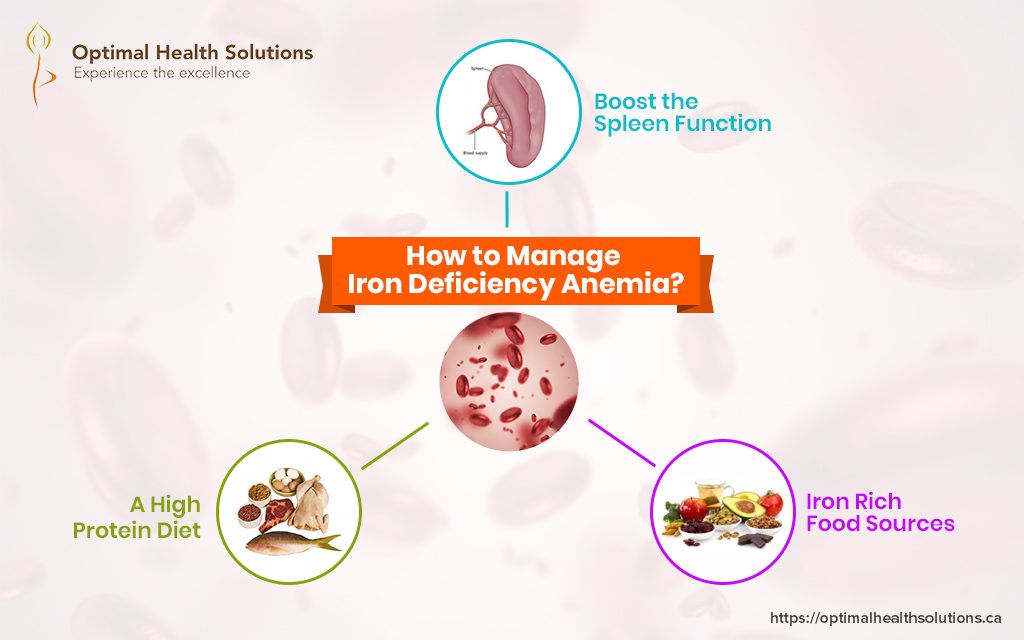 It is a good idea to get advice from your healthcare provider or perhaps from a registered dietitian about the best ways to eat when you have anemia. Also, make sure that grapefruit does not interfere with any of your medications.
It is a good idea to get advice from your healthcare provider or perhaps from a registered dietitian about the best ways to eat when you have anemia. Also, make sure that grapefruit does not interfere with any of your medications.
It’s important to be educated on what you can do to take the best care of yourself that you can. It is also important that you and your healthcare provider make decisions together about what works best for you. Take the opportunity to ask for a referral to a registered dietitian if you want help setting a diet to help with iron intake. Make sure you ask all the questions that you have so you can be confident in moving forward.
Resources
Are there resources for people with anemia?
Depending on what kind of anemia you have or are interested in learning more about, you might find the following resources to be helpful.
90,000 Water-related diseases: anemia
Anemia
Anemia is common throughout the world. Its main reason is that iron deficiency in the body is the most common nutritional deficiency in the world. In addition to iron deficiency, a number of infectious diseases associated with inadequate hygiene, sanitation, and lack of safe water and water use are important contributors to anemia. These include malaria, schistosomiasis, and hookworm infections.
How does anemia affect people
In anemia, red blood cells do not carry enough oxygen to the tissues of the body. Anemia affects all population groups. However, it is most susceptible to pregnant women and young children. In a milder form, the disease does not manifest itself, it is asymptomatic. In its more severe form, anemia is associated with fatigue, weakness, dizziness, and drowsiness. Signs include a change in the normal color of the skin (in people with fair skin), as well as the lips, tongue, nail bed, and blood vessels in the whites of the eyes.
Signs include a change in the normal color of the skin (in people with fair skin), as well as the lips, tongue, nail bed, and blood vessels in the whites of the eyes.
If left untreated, anemia can become more severe and cause chronic conditions of ill health, such as impaired fetal development during pregnancy, delayed cognitive development and increased risk of infection in young children, and reduced physical performance in all people. Low birth weight infants, young children and women of childbearing age are particularly at risk of anemia. The body of women of childbearing age should receive 2-3 times more iron than is required for men or women of older age.
Reason
The main causes of anemia are related to diet and infection. They usually coexist in the same organism and worsen anemia.
Iron deficiency is the most common dietary factor contributing to anemia. It is caused by a monotonous diet rich, however, in substances (phytates) that interfere with the absorption of iron, which prevents the body from using iron from food. Iron deficiency can also be exacerbated by poor nutritional status, especially when it is associated with a lack of folate, vitamin A or B12, as is often the case in populations in developing countries.
In terms of infection, malaria is another important contributor to anemia: it affects 300-500 million people, and in endemic areas may account for half of all serious anemia (WHO, 2000). Infection with hookworm infection, and in some areas with schistosomiasis, also contributes to anemia. Approximately 44 million pregnant women have hookworm infections and 20 million have severe schistosomiasis infections. Anemia can also be caused by excessive blood loss, such as in gastrointestinal infections associated with diarrhea.The most important causes of water-related anemia are malnutrition and waterborne or waterborne infections.
Spread
Anemia is a widespread problem worldwide, and iron deficiency is the most common nutritional deficiency in the world. It affects mainly the poorest segments of the population, especially where malnutrition is widespread and populations are at high risk of waterborne infection.
It affects mainly the poorest segments of the population, especially where malnutrition is widespread and populations are at high risk of waterborne infection.
Magnitude of the problem
Nine out of ten people with anemia live in developing countries, about 2 billion people are anemic and many more are iron deficient (WHO, 2000). Anemia possibly contributes to up to 20% of maternal deaths.
Measures of influence
Since anemia is the result of many factors, identifying these factors and the causes and types of anemia is important. Important measures include elimination of root causes, correction of iron deficiency, treatment of initial disease-causing processes (especially nutritional deficiencies – a lack of folic acid, vitamin A and B12).
Promoting breastfeeding and adequate complementary feeding are essential in combating anemia in children.
Improving hygiene, sanitation and water supply are important measures to prevent anemia; and improving water management as a response to schistosomiasis and malaria where they occur.
Sources
WHO. Turning the tide of malnutrition: responding to the challenge of the 21st century.Geneva: WHO, 2000 (WHO / NHD.007)
Prepared for World Water Day 2001. Reviewed by staff and experts in the Department of Nutrition for Health and Development (NHD) and the Water, Sanitation and Health Unit (WSH), World Health Organization (WHO), Geneva.
WHO / WSH / WWD / DFS.07
Anemia: symptoms, types and treatment
What is anemia
Anemia , or anemia, is a condition in which the body lacks red blood cells (erythrocytes) or hemoglobin.
Erythrocytes transport oxygen to the organs and tissues, which enters the lungs. It participates in metabolism, that is, it helps cells to obtain energy from food. If there is little oxygen, the internal organs cannot work effectively: they simply do not have enough strength.
In the general analysis of blood, anemia is noticeable by the reduced level of hemoglobin – a key protein that is part of erythrocytes. It is he who combines with oxygen molecules and transports them throughout the body.
The most affected by this disorder are 90,049 children, women (especially pregnant women) and the elderly.But even young men are not immune from anemia and the serious problems associated with it.
What are the symptoms of anemia
Violation can not always be noticed. When the lack of oxygen is small, it has almost no effect on well-being. But if the lack of red blood cells increases, the symptoms of anemia appear quite clearly. Here they are:
- Fatigue.
- Weakness, unwillingness to do anything.
- Pale or yellowish skin.
- Mild shortness of breath.
- Frequent dizziness, headache attacks.
- Cold, freezing hands and feet.
- Rapid or irregular heartbeat.
- Discomfort, tightness in the chest.
What are the types of anemia
There are more than 400 types of anemia, and they are all divided into three groups.
1. Anemia caused by blood loss
This is when the number of red blood cells decreases due to bleeding – obvious external or non-obvious internal.It can occur for the following reasons:
- Heavy menstruation in women.
- Gastrointestinal diseases: ulcers, gastritis, hemorrhoids, cancer.
- Injury or surgery with blood loss.
- Uncontrolled use of non-steroidal anti-inflammatory drugs such as aspirin or ibuprofen. They can cause gastrointestinal bleeding, ulceration, or gastritis.
2. Anemias caused by a decrease or defect in the production of erythrocytes
Such cases of anemia are associated with the fact that the body, for some reason, does not produce a sufficient amount of hemoglobin or this protein cannot effectively “cling” oxygen and transport it to the organs and tissues.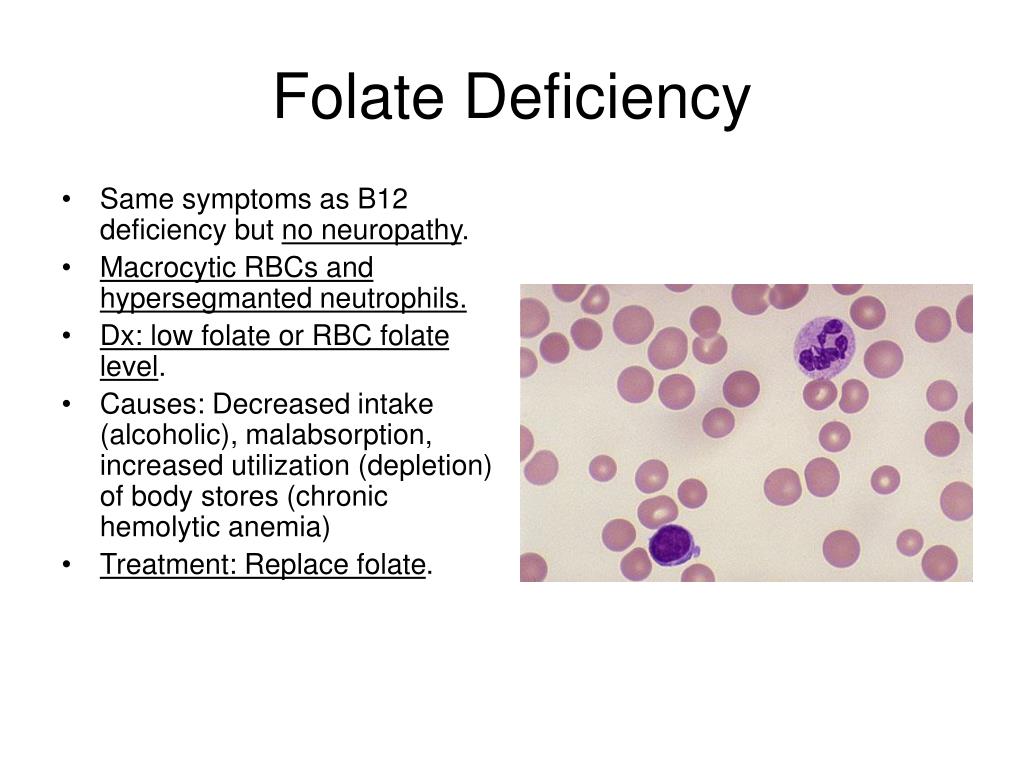
The following types belong to this group.
Iron deficiency anemia
This is the most common type of anemia . The condition is caused by the fact that the body does not receive a sufficient amount of iron – a trace element that is necessary for the production of hemoglobin.
Vitamin deficiency anemia
In addition to iron, the production of red blood cells is impossible without vitamins B9 (folic acid) and B12. If your diet is low in foods that contain these substances, anemia can occur.Also, some medications, alcohol abuse and certain intestinal diseases lead to vitamin deficiency.
However, sometimes the same B12 is enough in the diet, but the body simply cannot assimilate it. This leads to malignant pernicious (Latin perniciosa – “fatal”) anemia.
Anemia associated with diseases of the bone marrow
Various ailments, such as leukemia or myelofibrosis, interfere with the production of blood in the bone marrow, which is why it is critically deficient in red blood cells.In addition, the bone marrow can be damaged by radiation, chemotherapy, certain medications, or lead poisoning.
Sickle cell anemia
This is an inherited disorder in which red blood cells, normally round, take on an abnormal sickle shape. In this state, they quickly die, which leads to a permanent lack of oxygen carried with the blood.
Anemia associated with chronic diseases
This type of anemia occurs when the body does not have enough hormones to produce red blood cells.Hormone deficiency can be caused by aging, progressive kidney disease, hypothyroidism, diabetes, rheumatoid arthritis, lupus, and various cancers.
3. Anemia caused by destruction of erythrocytes
In such cases, we are talking about the fact that formed healthy erythrocytes, getting into the blood, for some reason begin to actively break down. This condition is called hemolytic anemia.
The destruction of erythrocytes can be caused by hereditary genetic factors, autoimmune diseases (the same lupus), snake or spider venom that has entered the body, certain medications, and so on.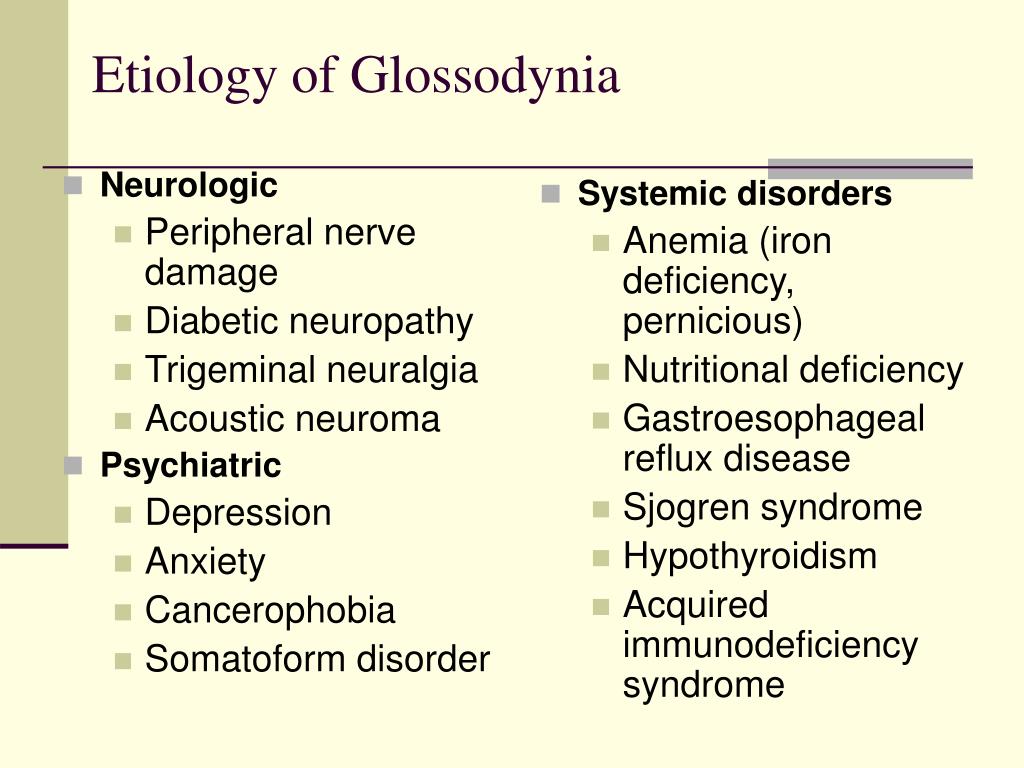
Why anemia is dangerous
There are several reasons why anemia cannot be ignored.
Increasing weakness
Due to “laziness”, a constant feeling of fatigue, you can stop coping with your usual activities – work duties, everyday life, caring for children. There will be no strength left for walks or sports, and this can further worsen your health.
Complications of pregnancy
In pregnant women, anemia can become one of the factors provoking premature birth.
Heart problems
When the body lacks oxygen, the heart starts pumping more blood so that organs and tissues still receive enough O2 for normal metabolism. Increased stress can cause cardiac hypertrophy or heart failure.
Various complications up to death
Anemia can have a dozen causes, including serious chronic diseases. If you do not pay attention to anemia, then you risk missing the disease that caused this condition – sometimes deadly.
How to treat anemia
It depends on the cause. Only a qualified doctor will help you understand them, so start by visiting a therapist.
Remember: not all types of anemia can be cured. In some cases, protracted and expensive treatment will be required, associated with chemotherapy, blood transfusions, bone marrow transplants, and taking drugs that suppress the immune system.
But the most common types of anemia – iron deficiency or vitamin deficiency – are easy to deal with.It is enough to make small changes to the diet.
The therapist will assess your condition and, possibly, prescribe the necessary vitamins and dietary supplements in the form of tablets. Or simply recommend eating a healthy, varied diet, including:
- Foods high in iron. These are beef, beans, lentils, dark green leafy vegetables, dried fruits.
- Lots of folic acid. Vitamin B9 is found in abundance in fruits and fruit juices, dark green leafy vegetables, green peas, beans, and peanuts.
- Dishes rich in vitamin B12. For example, meat and dairy products.
- Foods high in vitamin C. This vitamin improves the absorption of iron and is found, for example, in citrus fruits, bell peppers, broccoli, tomatoes, strawberries, melons.
Read also 🍏🍏🍏
Treatment and diagnosis of anemia in adults and children, iron deficiency anemia treatment in Moscow | Dr. Choi
Such an anomaly is observed in a fifth of the world’s population, mainly developing in the fair sex.Deficiency anemia, the treatment of which becomes much more difficult with late treatment, can lead to severe cardiopulmonary disease. That is why it is so important to seek professional help in a timely manner.
Types and stages of anemia
The occurrence of such pathological changes can be caused by various reasons, depending on which anemia is divided into the following groups:
- iron deficiency;
- posthemorrhagic;
- hemolytic;
- hypoplastic or aplastic;
- pernicious anemia.
Regardless of the causes and type of anomaly, anemia can manifest itself in mild severity (the hemoglobin level is slightly more than 90g / l), moderate (hemoglobin content ranges from 70g / l to 90g / l) and severe (when the hemoglobin content falls below 70g / l).
Anemia: main symptoms
For each person, the signs that signal the presence of anemia are strictly individual, although they depend on the type of pathology and the stage of its development.Among the common manifestations that indicate the need to treat anemia in both women and men, the following can be distinguished:
- the appearance of constant headaches, accompanied by dizziness and tinnitus;
- the occurrence of shortness of breath even in the absence of physical exertion;
- lethargy, general weakness and drowsiness, unreasonable irritability;
- increased number of heartbeats at rest.
Diagnostics of pathology
To identify the causes that led to the development of the disease, it is necessary to carry out not only standard analyzes, but also to perform extended studies.
General diagnosis of anemia
The complex of measures carried out in the center “Doctor Choi” for the diagnosis of anemia and identification of its causes, includes a detailed examination of the patient, clarification of the presence of chronic diseases, clarification of lifestyle and nutrition. After that, a general blood test is prescribed, which allows you to identify a low hemoglobin, the number of erythrocytes and leukocytes. To clarify the causes of anemia, you may also need to consult a gastroenterologist with a fibrogastroscopy, a surgeon to check the small and large intestines, and a gynecologist for women.If, after these studies, the cause of the pathology remains unclear, additional examinations are prescribed.
If you find yourself showing signs of anemia, don’t risk it. Contact a doctor for a consultation +7 (495) 799-26-30.
Request a call
Differential diagnosis of anemia
In difficult cases, the patient needs to take a blood test for detailed laboratory tests, with the help of which an individual hemogram is compiled, the leukocyte formula and the number of reticulocytes are determined.In addition, a biochemical study of blood serum and examination of bone marrow puncture under a microscope are carried out. This diagnosis allows you to accurately determine the type of anemia, as well as its stage.
Iron deficiency anemia symptoms and treatment
This type of disease develops as a result of hormonal disorders, the inability of cells to absorb iron, as well as an improper diet or frequent childbirth. In addition to the general signs characteristic of anemia, IDA manifests itself:
- low blood pressure against the background of a rapid pulse;
- pallor and dryness of the skin;
- peculiar taste preferences, expressed in eating raw meat and chalk;
- brittle nails and hair loss.
Usually, the diagnosis of iron deficiency anemia is carried out using the differential tests described above. Treatment of IDA is carried out by conservative methods based on taking iron preparations in the form of tablets, capsules or syrup. Ascorbic acid helps to enhance the therapeutic effect, contributing to a more complete absorption of iron. The duration of treatment depends on the individual properties of the patient’s body, as well as on the stage of iron deficiency anemia, but even after recovery, to consolidate the result, the drug is not stopped for another three months.
Benefits of treatment at Doctor Choi
In our center of oriental medicine, in addition to traditional methods of treating any type of anemia, both well-known methods of European practice and ancient oriental knowledge are used. Prescriptions for each patient are individual and include:
- Treatment of iron deficiency anemia by the classical drug method. The drugs are selected according to laboratory research data.
- Taking into account the specific symptoms of anemia, a special treatment is developed for each patient with the help of proper nutrition.This is a diet that contributes to the early restoration of the level of hemoglobin in the blood.
- The methods of acupuncture therapy and immunocorrection based on the intake of drugs that stimulate the body’s protective reserves are successfully applied.
All the help and support of the patient from the moment of treatment to the end of the treatment process is carried out by highly qualified specialists.
Preventive measures
In order not to have to determine the symptoms and treat iron deficiency anemia, it is necessary to adhere to a healthy lifestyle, not to abuse alcohol, and to give up smoking.Try to include in your diet foods that contain iron and folic acid (vegetables, fruits, whole grains), honey, nuts, stewed or steamed meats, etc. Get a screening and find out exactly if you have anemia, you can. by making an appointment at our center. During the examination, the doctor will answer all your questions and, if necessary, develop an individual treatment plan.
Diagnosis of Anemia, anemia in Moscow at the City Clinical Hospital 4
Anemia or Anemia is a syndrome in various diseases, in which the supply of oxygen to the whole body is disrupted, which leads to the development of many other diseases.In the body, hemoglobin in the blood decreases, due to a decrease in the number of red blood cells.
Erythrocytes and hemoglobin are involved in the transport of oxygen to the tissue. Without oxygen, many tissues and organs can experience hypoxia (oxygen starvation), which leads to disruption of their basic functions.
Depending on the degree of decrease in the level of red blood cells and / or hemoglobin, anemia can be mild, moderate or severe.
The most common cause of anemia is iron deficiency.
Diagnostics
The main method for detecting anemia is a general blood test to determine the erythrocyte sedimentation rate, which shows the number and ratio of various cells in the bloodstream, counting reticulocytes, conducting a biochemical blood test.
Basic laboratory techniques for the diagnosis of anemia:
| Complete blood count + ESR with leukocyte formula | 400 |
| Reticulocytes | 240 |
| Vitamin B 12 (Cyanocobalamin) | 600 |
| Iron | 190 |
| Erythropoietin | 950 |
No special preparation for conducting research is required, blood sampling is paid additionally.
The tactics of examination, treatment of the patient, interpretation of the results of laboratory tests are determined by the attending physician.
Laboratory results are not a diagnosis!
Symptoms
- lethargy,
- weakness,
- fatigue,
- dizziness,
- pallor of the skin and mucous membranes,
- headache,
- limb numbness,
- shortness of breath or feeling short of breath,
- increased heart rate,
- chest pain.
Risk groups:
- Individuals with low iron and vitamin intake,
- patients with chronic kidney disease, diabetes mellitus, cancer, inflammatory bowel disease,
- patients with chronic infections such as tuberculosis or HIV,
90,065 people whose relatives have had a form of anemia that can be inherited,
90,065 patients who have lost a lot of blood after injury or surgery.
General information about the disease
There are two main mechanisms for the development of anemia:
- reduction or impairment of the formation of red blood cells, as in iron deficiency or aplastic anemia,
- reduction in the life of erythrocytes in the vascular bed, excessive destruction of erythrocytes, as in hemolytic anemia.
Iron deficiency anemia
A decrease in the amount of iron leads to a decrease in hemoglobin in erythrocytes.The main function of the blood is violated – the respiratory one.
Recommended tests:
- Complete blood count + description of erythrocyte morphology,
- iron in serum,
- total iron binding capacity of serum,
- transferrin,
- ESR,
- reticulocytes.
B12-deficiency anemia
Lack of vitamin B12 or a violation of its absorption as a result of insufficient production of the internal factor of Castle by the stomach, slows down the process of growth and development of erythrocytes, which leads to a gradual decrease in their number in the bloodstream.
Recommended tests:
- Complete blood count + description of erythrocyte morphology + ESR,
- vitamin B
Aplastic anemia
Severe disorder of the formation of all types of blood cells in the bone marrow, including erythrocytes due to the toxic effects of drugs, chemical and physical factors, viral infections (hepatitis V.S.D., influenza).
Recommended tests:
- Complete blood count + description of erythrocyte morphology + ESR,
- reticulocytes,
- erythropoietin (the synthesis of this hormone is enhanced with aplastic anamias)
Hemolytic anemia
- A blood disease in which premature destruction of red blood cells in the bloodstream occurs.Cause of hemolytic anemias:
Hereditary (congenital) – clinical symptoms appear in the first years of life;
- primary – the reason is unclear, appear against the background of full health
- acquired – arise in the process of life as a result of exposure to adverse environmental factors.
Recommended tests:
- Complete blood count + description of erythrocyte morphology + ESR,
- reticulocytes,
- total bilirubin and bilirubin fractions (direct and indirect),
- general urinalysis,
- antibodies to hepatitis B, C, D.
- Research of bone marrow punctate.
Anemia in chronic diseases x
Various long-term diseases.
Recommended tests:
- Complete blood count with leukocyte count and ESR,
- reticulocytes,
- biochemical blood test,
- Erythropoietin
All anemias are divided into 2 groups: acute and chronic.
Chronic develops over a long period of time, for example, with chronic kidney disease or cancer.In this case, the symptoms of anemia can be smoothed out by the manifestations of the underlying disease.
Acute anemia occurs as a result of a sharp profuse blood loss. Her symptoms appear immediately: severe dizziness, weakness, pallor, tinnitus.
Prevention
For the prevention of anemia it is necessary:
– balanced varied nutrition
– eating a sufficient amount of vitamins and minerals
– timely diagnosis of concomitant diseases
90,000 Peculiarities of anemic syndrome in elderly patients
Anemia is a clinical and hematological syndrome characterized by a decrease in hemoglobin
per unit volume of blood, more often with a simultaneous decrease in the number of erythrocytes
, which leads to the development of oxygen starvation of
tissues.
The criterion of anemia is considered to be a decrease in the hemoglobin level below 130 g / l
and the number of erythrocytes below 4 × 1012 / l in men and, accordingly, below 120 g / l and 3.5
× 10 12 / l in women.
Anemias are observed in 2-20% of the world’s population, however, it should be emphasized that
the incidence of this syndrome in patients at different periods of life is different. It is necessary
to take into account a significant increase in the incidence of anemic syndrome in patients of
older age groups. In persons over 65 years of age, the prevalence of anemia is 90,239 90.3 per 1000 inhabitants for men and 69.1 per 1000 for women.Over the age of 85, anemia
is detected in 27-40% of men and in 16-21% of women.
The prevalence of anemia is highly dependent on the region, social –
economic conditions and the level of health care development.
Sex differences in the incidence of anemia are known. In elderly patients and
elderly patients, the difference in the incidence of anemia decreases, and this syndrome occurs
approximately equally in elderly men and women.
In most cases of anemia – not an independent disease, but a symptom,
a manifestation of another disease.
In patients of older age groups, the incidence of diseases is significantly increased,
which can lead to the development of anemia. However, in elderly patients, as in
young patients, the development of anemia is most often associated with blood loss. Moreover, the source of blood loss
is most often localized in the gastrointestinal tract. The increase in the prevalence of anemias
is largely associated with a decrease in the absorption bridgehead of substances involved in
hematopoiesis, for example, iron, vitamin B 12. Absorption is impaired in chronic
gastritis (primarily atrophic), enteritis of various origins, after
resection of small intestine or resection of the stomach by the Billroth II type with
shutdown of the duodenum and other diseases.It is fundamentally important to understand the sharp increase in the number of oncological diseases leading to the development of anemia in elderly and senile patients of
age.
In geriatric practice, 3 types of anemia are most common:
– iron deficiency
– B12 – deficiency
– anemia of chronic diseases.
At the same time, all types of anemias can occur in elderly patients, however,
hereditary forms are extremely rare.
Often anemias are of complex origin, for example, a combination of
iron deficiency and B12-deficiency anemia is often observed.Patients of the older age groups
most often have several reasons for the development of anemia at the same time, for example,
impaired iron absorption, blood loss, chronic inflammation,
decreased erythropoietin production in patients with chronic pyelonephritis and
with advanced renal failure, as well as chronic heart failure
( CHF), as a consequence, ischemic heart disease (IHD), etc.
It is important to note the effect of anemia on the course of a number of diseases of internal organs
, occurring mainly in elderly patients.The most studied
is anemic syndrome in diseases of the cardiovascular system.
It was revealed that in patients with CHF with a low level of hemoglobin, the risk of death increases.
At the same time, a decrease in hemoglobin levels contributes to the development of CHF. So, hypoxia,
observed with anemia, contributes to the violation of the diastolic function of the myocardium.
The main causes of anemia in patients with CHF are increased blood plasma
, bone marrow dysfunction, iron deficiency, decreased production of
erythropoietin, activation of cytokines, in particular tumor necrosis factor.
In patients with myocardial infarction with concomitant anemia, a high level of mortality
and access to CHF were revealed.
According to most researchers, a decrease in hemoglobin level in patients of
older age groups most often develops precisely as a result of pathological processes
. Therefore, when making a diagnosis of anemia, the patient needs an oncological search.
It is also necessary to pay close attention to concomitant pathology,
which can be exacerbated.
Headconsulting department, hematologist Rachkova Tatyana Arkadyevna
Anemia
Anemia is a condition in which the number of red blood cells and / or hemoglobin in the blood becomes below normal.
Erythrocytes and the hemoglobin contained in them are involved in the transport of oxygen from the lungs to the tissues. Without oxygen, many tissues and organs can experience hypoxia (oxygen starvation), which has an extremely negative effect on their work. Depending on the degree of decrease in the level of red blood cells and / or hemoglobin, anemia can be mild, moderate, or severe.
Iron deficiency is the most common cause of anemia.
Synonyms Russian
Anemia.
English synonyms
Anemia, Anaemia.
Symptoms
Although different types of anemias have different causes, their symptoms are very similar:
- fatigue,
- weakness,
- fatigue,
- dizziness,
- pallor,
- headache,
- cold sensation,
- limb numbness,
- shortness of breath,
- feeling of lack of air,
- increased heart rate,
- chest pain.
Who is at risk?
Anemia is very common and occurs in both women and men of different ages. However, there are groups of people who are more susceptible to developing this disease than others:
- those who eat little iron and vitamins,
- patients with chronic kidney disease, diabetes mellitus, cancer, inflammatory bowel disease,
- patients with chronic infections such as tuberculosis or HIV,
90,065 people whose relatives have had a form of anemia that can be inherited,
90,065 patients who have lost a lot of blood after injury or surgery.
General information about the disease
There are two main mechanisms for the development of anemia:
- reduction or impairment of the formation of red blood cells, as in iron deficiency or aplastic anemia,
- reduction in the life of erythrocytes in the vascular bed, excessive destruction of erythrocytes, as in hemolytic anemia.
Mechanisms of development of the most common types of anemia
Type of anemia | Mechanism | Possible causes | Recommended tests |
Iron deficiency | A decrease in the amount of iron in the body leads to a decrease in hemoglobin and, as a consequence, to a decrease in the number of red blood cells. | Blood loss, diet low in iron, impaired absorption of iron. | Complete blood count (without leukocyte count and ESR), serum iron, serum iron-binding capacity, transferrin, reticulocytes. |
V 12 – deficient | Lack of vitamin B 12 prevents the growth and development of red blood cells, and this in turn causes a decrease in the number of red blood cells. | Lack of intrinsic factor, diet low in vitamin B 12 , impaired absorption of vitamin B 12 . | Complete blood count (without leukocyte count and ESR), vitamin B 12 . |
Aplastic | Decrease in the formation of all types of cells in the bone marrow, including erythrocytes. | Antineoplastic therapy, exposure to toxins, autoimmune diseases, viral infections. | Complete blood count (without leukocyte count and ESR), reticulocytes, erythropoietin, erythrocyte sedimentation rate (ESR). |
Hemolytic | The life span of erythrocytes, which is normally about 120 days, decreases due to their destruction in the bloodstream. | Congenital disorders of the development of erythrocytes, reactions to blood transfusion, autoimmune diseases, taking certain medications. | Complete blood count (without leukocyte count and ESR), reticulocytes, bilirubin. |
Anemia in chronic diseases | Various long-term diseases lead to a decrease in the formation of red blood cells. | Kidney diseases, diabetes mellitus, tuberculosis, HIV. | Complete blood count (without leukocyte count and ESR), erythropoietin, erythrocyte sedimentation rate (ESR). |
All anemias can be divided into 2 groups: acute and chronic. Chronic develops slowly, without obvious symptoms, over a long period of time, for example, with chronic kidney disease or cancer.In this case, the symptoms of anemia can be smoothed out by the manifestations of the underlying disease. Therefore, this species may remain unrecognized for a long time.
Acute anemia occurs as a result of sudden profuse blood loss, for example after damage to blood vessels due to trauma or gastrointestinal bleeding. Her symptoms appear immediately: severe dizziness, weakness, pallor, tinnitus.
Diagnostics
The main method for detecting anemia is a complete blood count, which shows the number and ratio of various cells in the bloodstream.It enables the doctor to assess the size, shape and maturity of blood cells. Other studies may be prescribed, such as a test for ferritin, serum iron, etc. In case of already diagnosed anemia, a biochemical blood test is used to determine its type.
Treatment
A general practitioner is most often involved in the treatment of the most common forms of mild anemias. Based on the results of a complete blood count, he may refer the patient to another specialist, such as a hematologist.
Prevention
To prevent anemia, a balanced diet is necessary, and most importantly, it should be varied, because a lack of various substances can lead to this disease: iron, proteins, B vitamins, folic, ascorbic acid, copper, cobalt, etc. however, for example, in order to satisfy a person’s need for iron, it follows that, in addition to iron itself, there should also be substances in the diet that promote its absorption, primarily vitamin C.
Also recommended
- Complete blood count
- Reticulocytes
- Vitamin B 12 (cyanocobalamin)
- Iron in serum
- Erythropoietin
- Erythrocyte sedimentation rate (ESR)
Anemia – causes, diagnosis and treatment
Human blood consists of a liquid part (blood plasma) and solid cellular elements, which include erythrocytes (red blood cells), leukocytes (white blood cells) and platelets.Erythrocytes are responsible for the transfer of oxygen, leukocytes have the function of immune defense, and platelets provide blood clotting. The composition of erythrocytes includes hemoglobin, it is he who gives the blood a red color and is a direct carrier of oxygen.
What is anemia?
Any condition in which the number of red blood cells or hemoglobin decreases in the blood is called anemia, or in other words, anemia. A direct consequence of anemia is a decrease in the amount of oxygen carried by the blood and a lack of oxygen in the tissues of the body.As a result, a person’s skin turns pale, the pulse quickens, weakness, dizziness appear, and other unpleasant symptoms appear. Normally, the hemoglobin content in the blood should not be less than 130 g / l in men and 120 g / l in women (110 g / l for pregnant women).
Causes of anemia
The causes of anemia are very diverse, in accordance with this there are many of its types. Anemia can be caused by a lack of substances necessary for the production of hemoglobin, impaired maturation of red blood cells in the bone marrow, acute massive or prolonged blood loss, destruction of red blood cells under the influence of poisons or other unfavorable factors, hereditary diseases and other, more rare, reasons.
Types of anemia
Iron deficiency anemia – its cause is a lack of iron intake in the body, or its loss as a result of prolonged bleeding (heavy periods, stomach ulcer, etc.). It often develops in pregnant women, due to the increased need for iron during this period of life. The laboratory sign of iron deficiency anemia is low hemoglobin, a decrease in the number of red blood cells and serum iron. Treatment is long-term use of iron supplements in the form of tablets or injections.
Hemolytic anemia – is the result of the destruction of red blood cells (hemolysis) directly in the bloodstream for various reasons. Hemolysis can occur during poisoning with poisons (lead, snake venom, etc.), exposure to cold and stress, with some hereditary diseases. The laboratory sign is the detection of hemoglobin in the urine, an increase in blood bilirubin, in some cases – a change in the shape of erythrocytes, and others. Treatment for hemolytic anemia depends entirely on the underlying cause.
B12-deficiency anemia (pernicious) occurs when there is a lack of vitamin B12 in the body, which is necessary for the growth and maturation of red blood cells in the bone marrow, as well as for the proper functioning of the nervous system. For this reason, one of the distinguishing symptoms of B12 deficiency anemia is tingling and numbness in the fingers, and a wobbly gait. Erythrocytes of a special enlarged form are found in the blood. Lack of vitamin B12 can be observed in the elderly, with diseases of the digestive tract, in the presence of parasites – tapeworms.
Anemia of pregnancy – in most cases it is iron deficiency anemia. From the first weeks of pregnancy, the embryo needs to receive iron for the formation of blood cells. If the expectant mother continues to eat in the same way as before pregnancy, does not take vitamins, then the iron stores in her body are quickly depleted, which leads to anemia. Normally, hemoglobin in pregnant women should not be lower than 110 g / l, at lower values the absorption of oxygen by the blood worsens, which affects not only the mother’s body, but also the baby’s.To prevent anemia in pregnancy, it is sufficient to take 30 mg of iron per day.
Symptoms of anemia
The main signs of any anemia are pallor of the skin and lips, weakness, fatigue. Due to poor absorption of oxygen by the blood, the pulse quickens, it rises above 90 beats per minute. In addition, there may be additional symptoms depending on the underlying cause of the anemia.
In iron deficiency anemia, brittle nails and hair are common. With B12-deficiency anemia, a smooth crimson tongue, tingling and numbness in the fingers, unsteadiness when walking.In hemolytic anemia, jaundice is common. If you suspect anemia, you should definitely consult a doctor and take blood tests.
Diagnosis of anemia
Diagnosis of anemia is carried out by a doctor on the basis of a general blood test, as well as additional tests depending on the cause. In addition to low hemoglobin, the number of erythrocytes, their size and shape, and the presence of immature blood cells are important.
In case of iron deficiency anemia, blood tests for iron are required.These include serum iron, ferritin, serum total iron binding capacity (TIBC), and transferrin. For all these indicators, the doctor can establish not only the type of anemia, but also its latent form even before the onset of symptoms.
If anemia is caused by hereditary diseases or poisoning, additional tests may be required.
Treatment of anemia
Iron is not necessary for all types of anemia, therefore, before taking any medications, it is necessary to establish its exact cause and type.Mild forms of anemia are treated at home as prescribed by a doctor; in a serious condition of the patient, hospitalization may be required.
If anemia has arisen due to a lack of iron in food, it is required to take it in the form of tablets or injections (in advanced cases). With prolonged blood loss, iron intake is also required, but at the same time the cause should be treated – the elimination of the source of bleeding.
In case of a lack of vitamin B12, it is required to restore its amount in the body.Since the absorption of vitamin B12 in the intestines is very often impaired in people with anemia, it is prescribed in the form of injections. In parallel with vitamin B12, you may need to take folic acid as directed by your doctor.
Other types of anemia are treated in strict accordance with the cause.



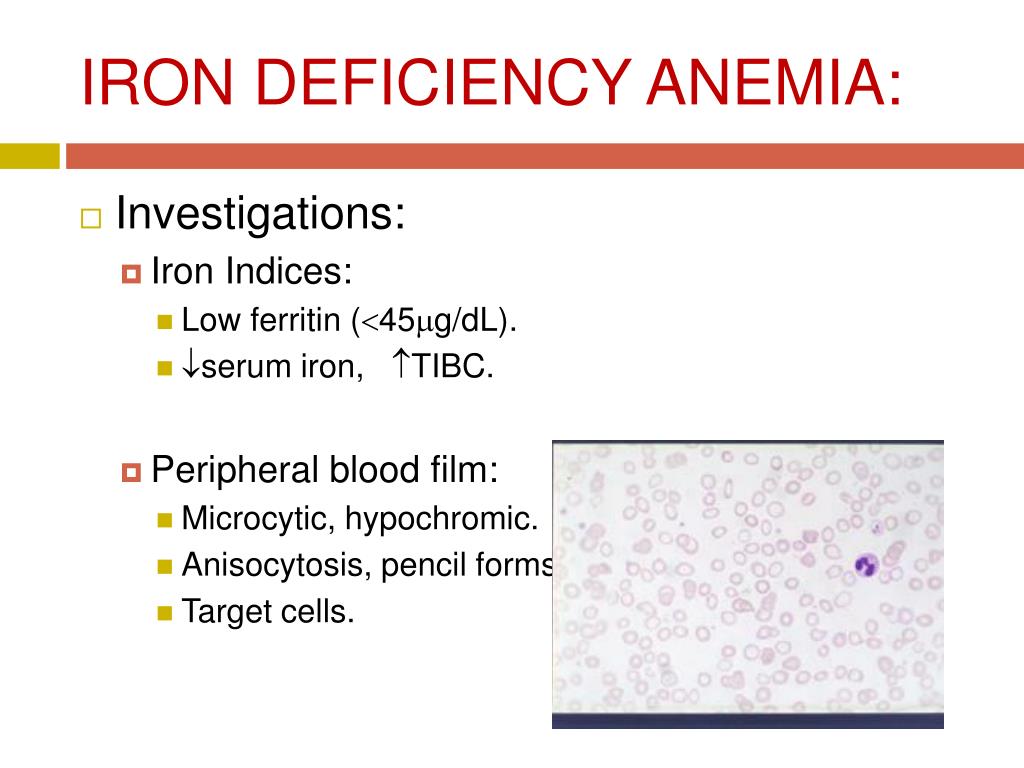 Some inherited anemias, such as sickle cell anemia, can lead to life-threatening complications. Losing a lot of blood quickly results in acute, severe anemia and can be fatal.
Some inherited anemias, such as sickle cell anemia, can lead to life-threatening complications. Losing a lot of blood quickly results in acute, severe anemia and can be fatal.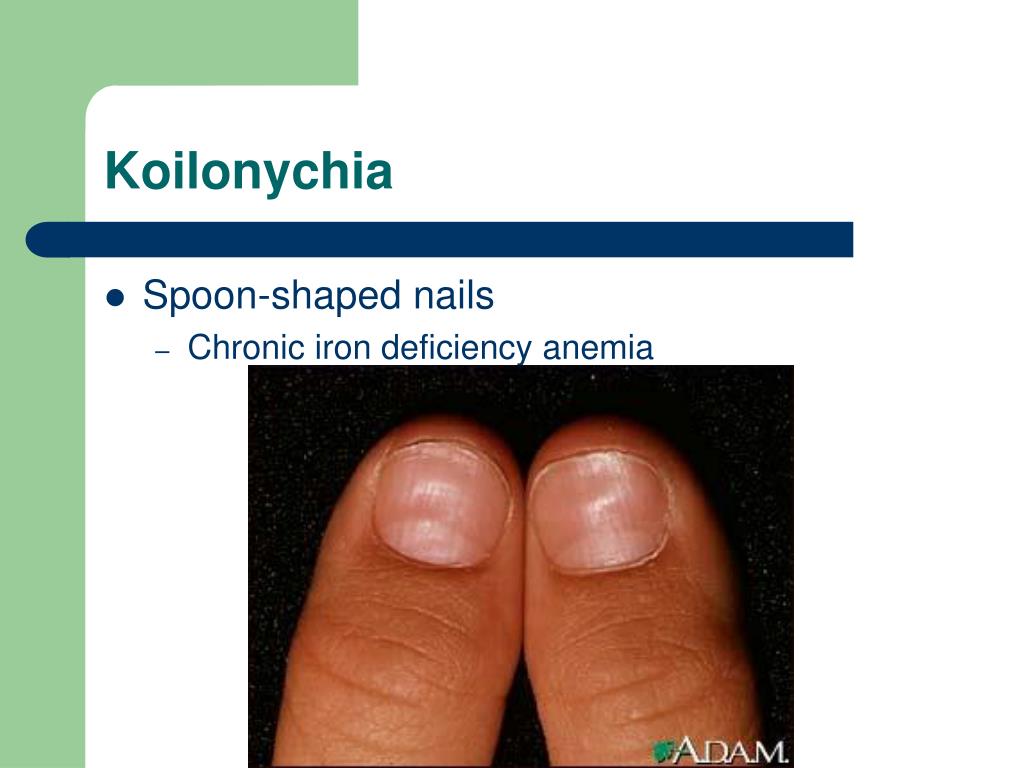
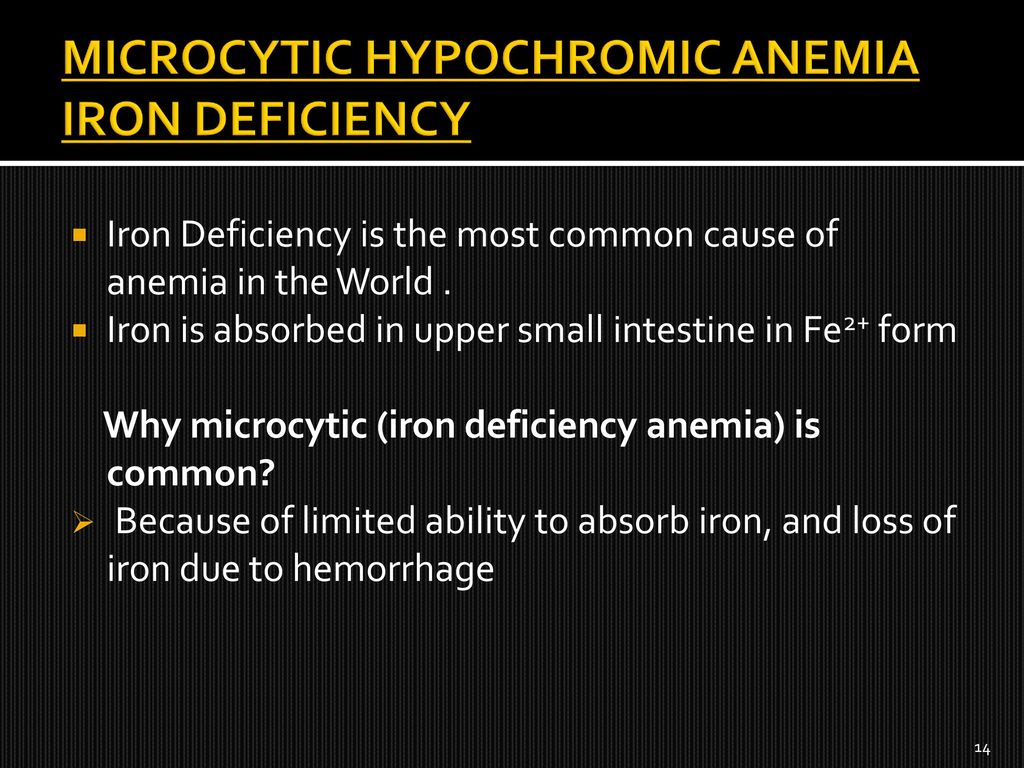
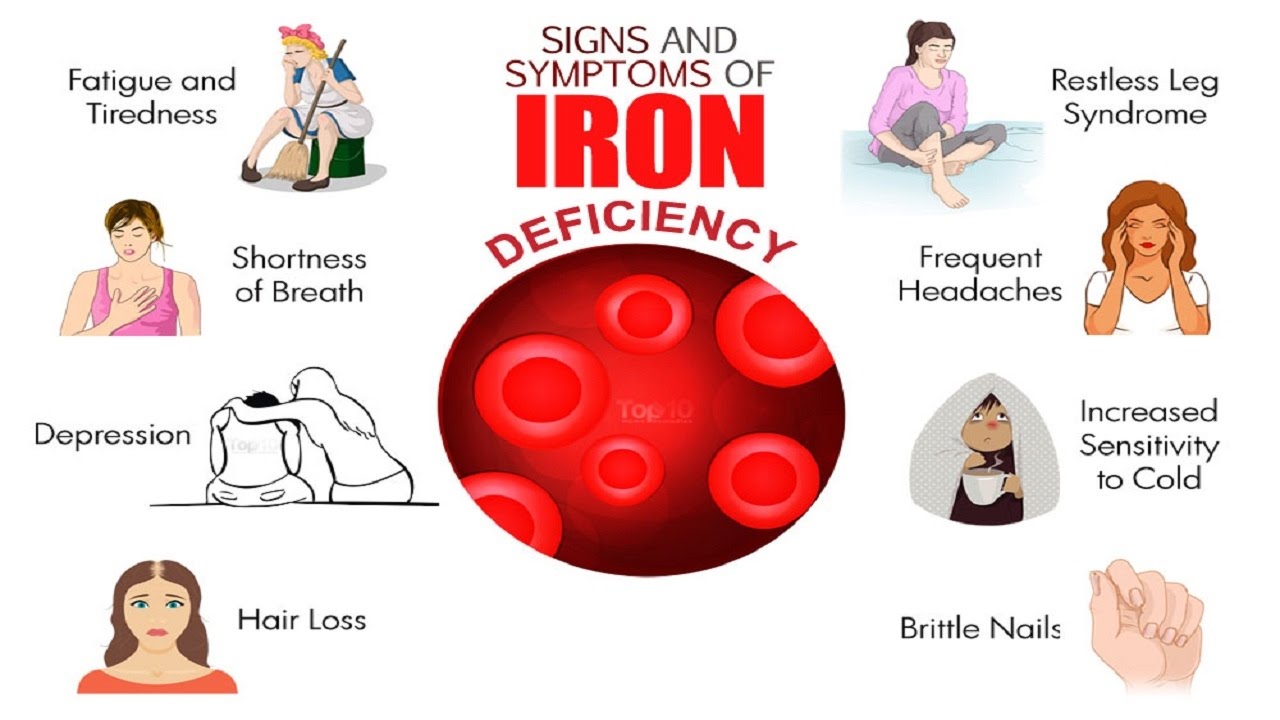 National Heart, Lung, and Blood Institute. https://www.nhlbi.nih.gov/health-topics/iron-deficiency-anemia. Accessed July 23, 2019.
National Heart, Lung, and Blood Institute. https://www.nhlbi.nih.gov/health-topics/iron-deficiency-anemia. Accessed July 23, 2019. You can also get it if your food comes into contact with some types of pottery that aren’t glazed right.
You can also get it if your food comes into contact with some types of pottery that aren’t glazed right.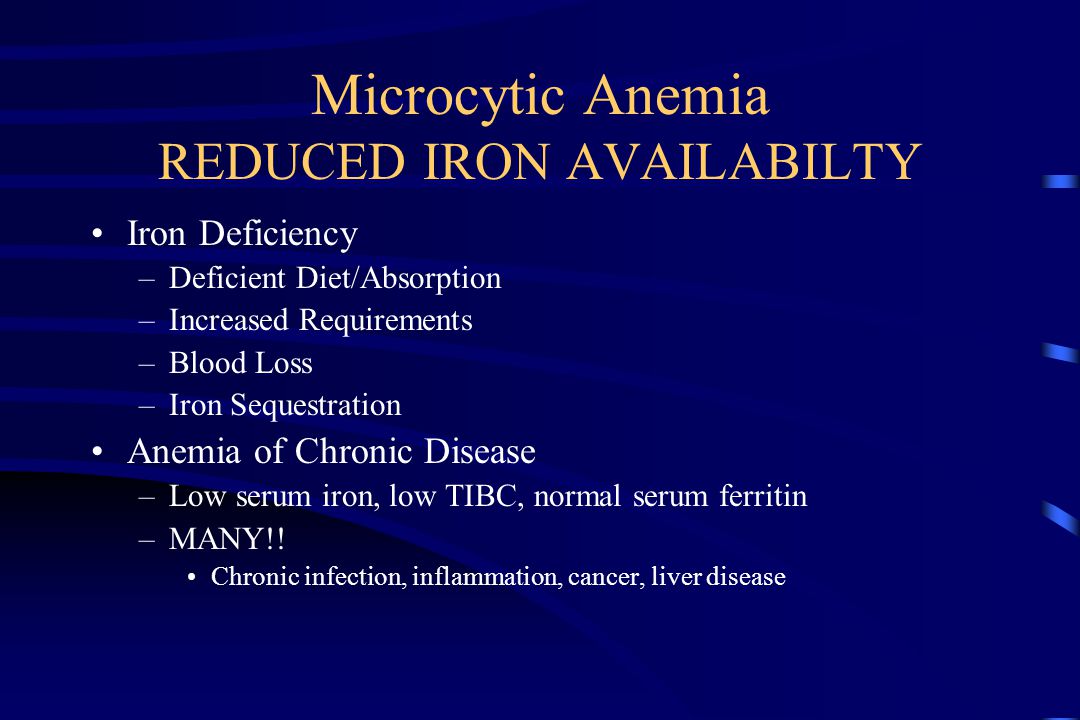 If you overcook vegetables or don’t eat enough of them, you might not get enough folate.
If you overcook vegetables or don’t eat enough of them, you might not get enough folate.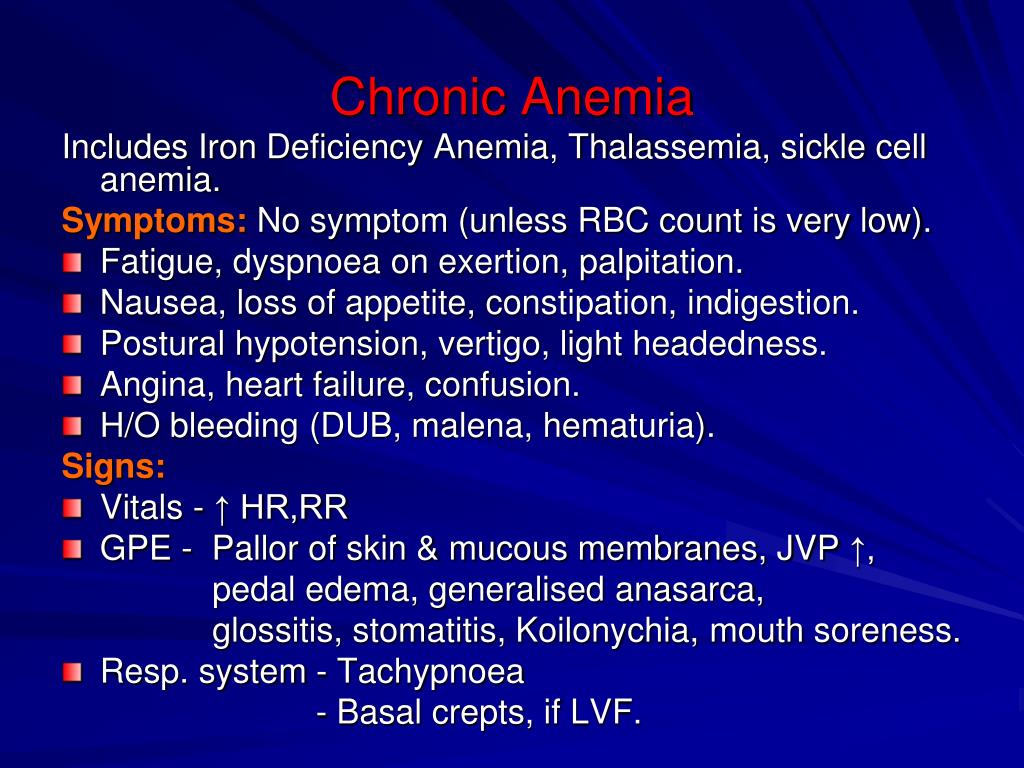

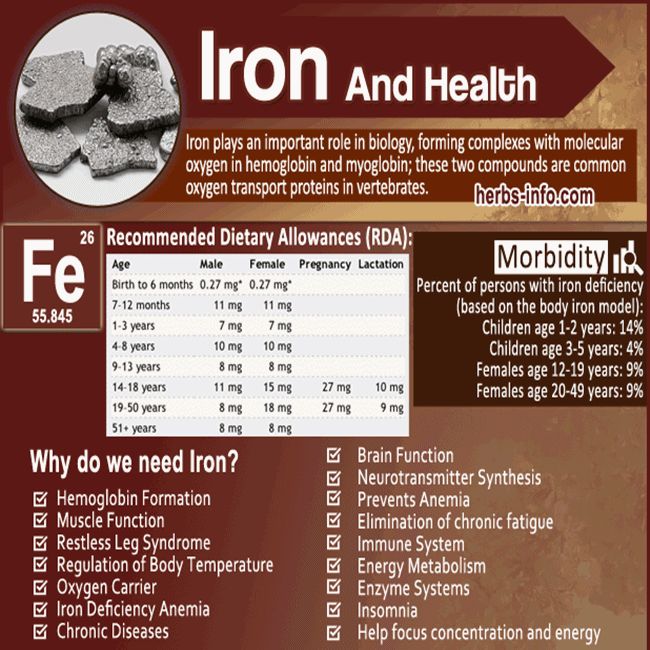 This is especially true if you have heavy periods or a condition like fibroids.
This is especially true if you have heavy periods or a condition like fibroids.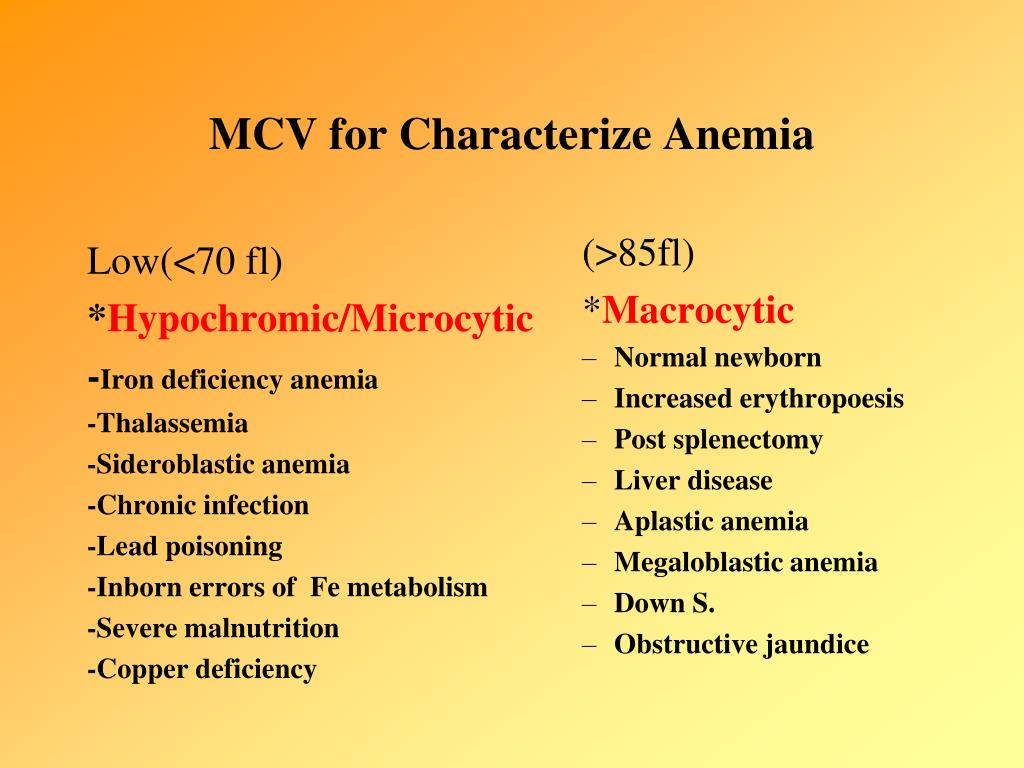
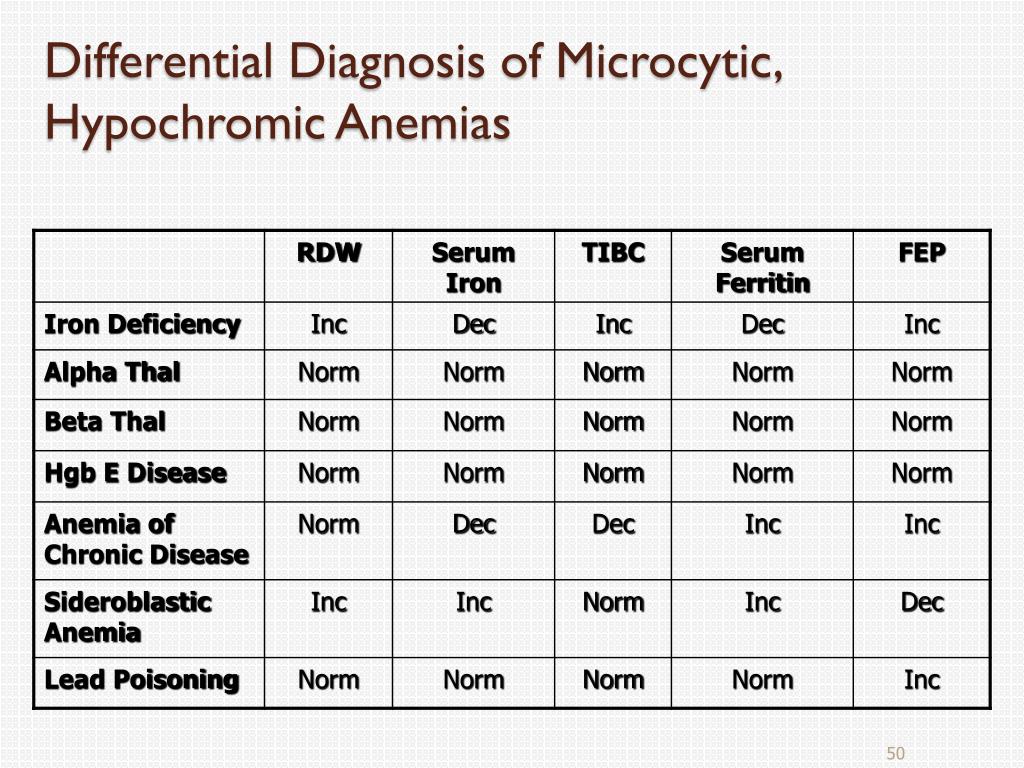 The body loses more iron with blood loss than it is able to replace with food. This can happen to women having heavy menstrual periods or in people who have inflammatory bowel disease.
The body loses more iron with blood loss than it is able to replace with food. This can happen to women having heavy menstrual periods or in people who have inflammatory bowel disease.